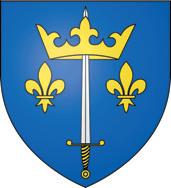
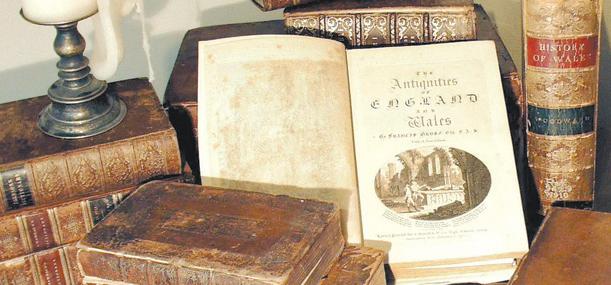 ■
Sylvia Defendi and Anthony Barich
■
Sylvia Defendi and Anthony Barich
The official World Youth Day Cross and its accompanying Icon of Mary and the child Jesus made a surprise visit to Perth last week, although most Perth Catholics would have been unaware that for two days they were in Western Australia for the first time ever.
The brief visit gave a glimpse of the powerful witness the Cross and Icon will bring in May when Archbishop Barry Hickey and the WA Premier Alan Carpenter formally welcome them to the State; complete strangers embraced the Cross when it was carried to Scarborough Beach on January 9.
One passer-by, a young Brazilian woman, embraced the Cross, while another young man in industrial work clothes joined in the singing.
Around 100 youthful participants of Summer School, a week-long retreat run by the Disciples of Jesus, an Australian-founded Catholic charismatic Covenant community, enjoyed private veneration of the Cross and Icon on Tuesday and Wednesday.
The Cross and Icon arrived in Perth on Monday night at 11.30pm from Melbourne in the low-key visit and were returned to Sydney on Wednesday afternoon.
The Disciples of Jesus hosted the two international WYD symbols as part of an agreement that saw them visiting youth conferences, festivals and Eastern Catholic engagements around the country over the Christmas break, including Young Vinnies and the Young Continued - Page 5
Taking it to the streets: Members of the Disciples of Jesus Covenant Community in Perth brought the World Youth Day Cross to Scarborough Beach on January 9, where many unsuspecting faces looked on. While the surprise visit to Perth had been part of the Cross and Icon’s itinerary since it was drafted, most of Perth’s population did not know the symbols of faith had visited the city. The Cross and Icon will return to WA during May and June and will be accompanied by many events and an official welcome. PHOTOS: SYLVIA DEFENDI.

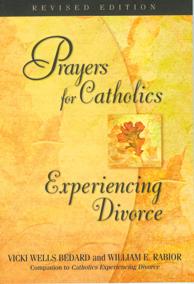



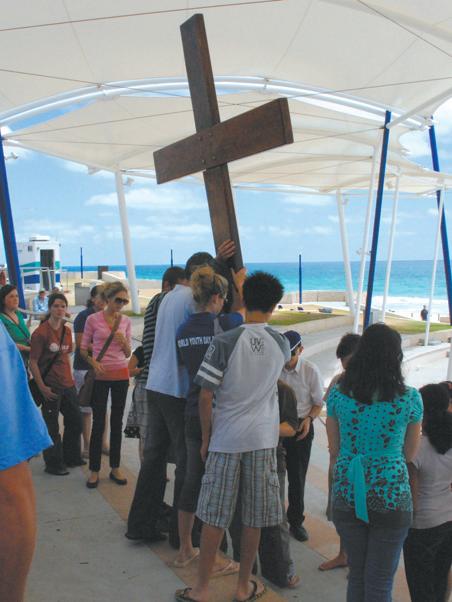

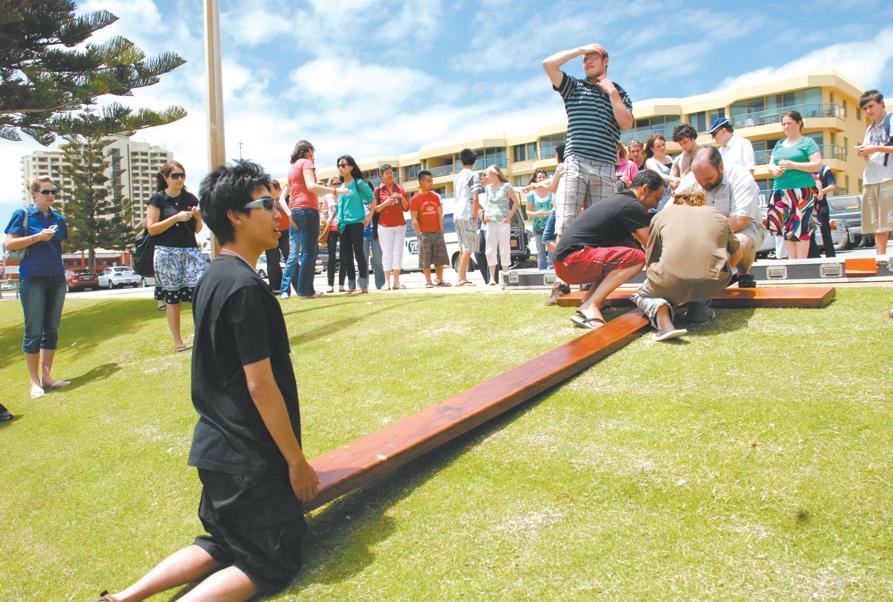












Western Australia’s award-winning Catholic newspaper - Wednesday January 16, 2008 www.hondanorth.com.au 432ScarboroughBchRd,OsbornePark,6017 432 Scarborough Bch Rd, Osborne Park, 6017 Ph: 94499000 9449 9000 new@ new@hondanorth.com.au DL0891 ‘DEALER OF THE YEAR’ 1996 ❙ ‘WA OVERALL EXCELLENCE’ 1996, 1998, 2003 ‘WA SALES EXCELLENCE’ 1996, 1997, 1998, 2002, 2003, 2004, 2005 FORTHEBESTDEALONANEWHONDA, FOR THE BEST DEAL ON A NEW HONDA, ACCESSORIES,PARTS,FINANCEORFROM ACCESSORIES, PARTS, FINANCE OR FROM OURRANGEOFQUALITYUSEDVEHICLES. OUR RANGE OF QUALITY USED VEHICLES. FOR THE BEST DEAL ON A NEW HONDA, ACCESSORIES, PARTS, FINANCE OR FROM OUR RANGE OF QUALITY USED VEHICLES www.hondanorth.com.au 432 Scarborough Beach Road, Osborne Park, 6017 Ph: 9449 9000 new@hondanorth.com.au ‘DEALER OF THE YEAR’ 1996 ‘WA OVERALL EXCELLENCE’ 1996, 1998, 2003 ‘WA SALES EXCELLENCE’ 1996, 1997, 1998, 2002, 2003, 2004, 2005 The Parish. The Nation. The World. Perth, Western Australia $2 INDEX Perspectives - Vista 4 - pg 9 The World - Pages 10 - 11 Panorama - Page 14 Classifieds - Page 15 TURNAROUND IN ITALY? A proposed moratorium on abortion is winning support not only from the Church but from other surprising quarters - including feminists and atheists. Vista 1-3 THE R ECORD WYD Cross visits Perth WYD Cross and Icon make surprise visit to the West, inspire passers-by at Scarborough Beach DEDA VINCIFYING HISTORY Channel 7 will air an Aussie academic’s Easter documentary confirming that Christians have always believed Jesus is who He said He was - the Son of God. Page 7 THE P M’S FAITH New light has been shed on the religious attitudes of Prime Minister Kevin Rudd with the publication of a book by a Catholic parish in Canberra. Page 6 Summer Reading Short story by Hal Colebatch -Page 12 Dealing with the pain Two sensitive books offer comfort for the divorced - Page 13
By
Walking with Him
Daily Mass Readings
20
Notre Dame honours contributors




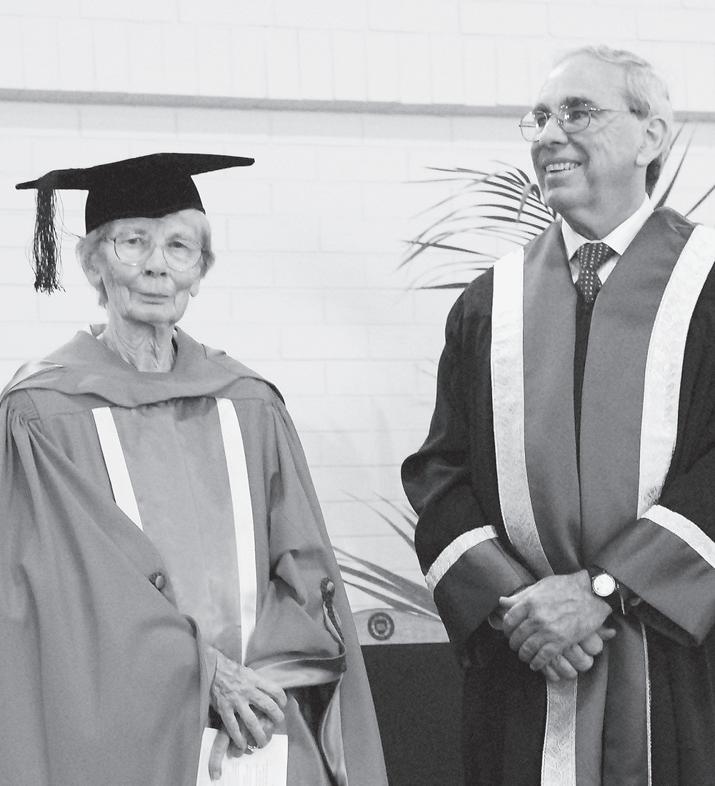
Ps 39:2.4.7-10 An Open ear
Cor 1:1-3 Grace and peace Jn 1:29-34 Lamb of God
21M St Agnes, virgin, martyr (M)
Red 1 Sam 15:16-23 Saul rejected
Ps 49:8-9.16-17.21.23Am I like you?
Mk 2:18-22 Then they will fast
22T St Vincent, deacon, martyr
Gr 1 Sam 15:16-23 Come, anoint him
Ps 88:20-22.27-28 David, my servant
Mk 2:18-22 The sabbath day
23W Ss Timothy and Titus, bishops (M)
Wh 2 Tim 1:1-8 I long to see you
[Alt. Titus 1:1-5 The faith we share]
Ps 95;1-3.7-8.10 Proclaim God’s help
Lk 10:1-9 Lambs among wolves
24T St Francis de Sales, bishop, doctor of the Church (M) S
Wh 1 Sam 18:6-9.19:1-7 David warned
Ps 55:2-3.9-13 God is on my side
Mk 3:7-12 Crowds see Jesus
25F The Conversion of St Paul, Apostle, Feast
Wh Acts 22:3-16 What am I to do?
[Alt. Acts 9:1-22 You are persecuting me]
Ps 116:1-2 Praise the Lord
Mk 16:15-18 These are the signs
26S Australia Day
Wh Isa 32:15-18 Work of the Spirit
Ps 84:9-14 God gives peace
1 Cor 12:4-11 One Spirit, one Lord [Alt. Rom 12:9-13 Untiring effort]
Mt 5:1-12 Sources of blessing [Alt.Lk 12:22-32 You must not worry]



Outstanding contributors to the University of Notre Dame Australia were acknowledged at a special awards ceremony recently.
The event, held at the start of the end-ofyear graduation weekend, recognised staff and supporters of Notre Dame who have helped the development and life of the University.
An honorary degree of Doctor of Laws was given to Sister Cecilia Masterson SJG for her outstanding service to her congregation, the Sisters of St John of God (SJOG), to the SJOG health care system, to the Catholic Church in Australia and for her support in the establishment of Notre Dame.
Mgr Michael Keating, UNDA trustee, received an honorary degree of Doctor of Laws for his distinguished and significant contribution to the priesthood, to parish
life and the Church in the Archdiocese of Perth. It was also awarded for his exceptional service to, and support of the University as one of its founders. Mgr Keating said he was extremely thankful in accepting this degree and was grateful to have played a part in the extraordinary development of Notre Dame. “For me it has been a labour of love, as we have gone through moments of great achievement and great challenge. I have always felt the hand of God in this enterprise. Many minor and major miracles have been a part of this journey” he said.
Distinguished Service Medals were awarded to Professor Mary McComish, Professor Peter Dallimore, Professor Don Watts and Professor Simon Adams.
Vice Chancellor Dr Peter Tannock said these people continue to be extremely committed to Notre Dame’s growth and progress, playing dedicated roles in the development of the academic community in Fremantle.

Students up pressure on sex traffickers
Campaign aims to combat modern-day slavery
SAN FRANCISCO (CNS)Students and campus ministry officials at Jesuit-run University of San Francisco are mapping sites where sex trafficking goes on in an effort to help humanitarian organisations combat what they term a blight of modern-day slavery in the city.
The students suspect that at least 90 sex emporiums operate in San Francisco with women held against their will. Because of the difficulty in gathering witness testimony and in tracking the life stories of the victims back to their home countries, the students fear traffickers often escape prosecution.
But they believe the evidence they are collecting will raise public awareness and point aid organisations to where victims are being kept against their will.
The students described the effort at a recent session of the Theology on Tap discussion series for young adult Catholics, sponsored by the Archdiocese of San Francisco. The meeting was held at a popular bar in the city’s financial district.
“A lot of the places we’re looking at are a few blocks from
here,” student Mellice Hackett said.
The effort is part of the “Not For Sale” campaign against human trafficking created by David Batstone, a University of San Francisco ethics professor and an adviser to the undergraduate Erasmus Community on campus.
The name is taken from a book Batstone wrote on trafficking and the abolitionists fighting the problem in many countries.
Batstone decided to investigate trafficking after learning that one of his favourite Indian restaurants in the Bay Area had been trafficking women from India for kitchen work and other tasks.
The “Not for Sale” campaign is becoming a global network of abolitionists, involving faith organisations and high schools as well as colleges.
More than 35 people attended the discussion group; half of them were under the age of 30 and they represented nine parishes and two colleges.
Christina Hebets, a junior, said she and Hackett began investigating sex trafficking in San Francisco in 2006. Newspaper and Internet ads for massage parlors raised the students’ suspicions that some
establishments were marketing groups of women. They theorised the women were being used against their will.
The students then staked out some of the massage parlors, many of which were located on upper floors and had boardedup windows. They noticed that few women left the buildings. They also learned the establishments did not have massage or business licenses. After becoming frustrated with follow-up work to determine if charges could be brought against the suspected traffickers, they concluded that not enough is being done to enforce criminal laws against trafficking.
“We found out that whoever’s supposed to focus on human trafficking, it really falls through a loophole,” Hebets said.
But Lt Mary Petrie, in charge of the vice crimes unit at the San Francisco Police Department, heatedly denied that her officers fail to follow up on any allegation of human trafficking. “There’s never been a thirdparty report that’s ever been pushed aside,” she said.
The department is part of the North Bay Trafficking Task Force, which also includes lawenforcement and social service agencies in San Mateo, Marin and Sonoma counties. The task
force investigates complaints and responds with legal action or aid to the victims.
She said citizens who want to help law enforcement should know the legal definition of trafficking is “services or labour that are obtained through force, fraud or coercion.”
She added that in the same establishment a sex worker may freely earn $7775 a month while another may be under coercion.
“That is the difficult thing to determine,” Petrie said. “If the students have probable cause or reasonable suspicion that trafficking victims are anywhere, by all means we take all allegations seriously.”
In an interview with Catholic San Francisco, the archdiocesan newspaper, Batstone stood by the students’ work.
“The task force has really been disappointing in that they have yielded very few trafficking cases,” he said, adding that it “flies in the face” of evidence gathered by students.
Luis Enrique Bazan, who is associate director of the university ministry department at the University of San Francisco and who guided the students’ investigation, also expressed frustration that law enforcement did not respond to the findings.
Page 2 January 16 2008, The Record EDITOR Peter Rosengren cathrec@iinet.net.au JOURNALISTS Anthony Barich abarich@therecord.com.au Sylvia Defendi sdefendi@iinet.net.au Paul Gray cathrec@iinet.net.au Mark Reidy reidyrec@iinet.net.au ADMINISTRATION Caroline Radelic administration@therecord.com. au ACCOUNTS Cathy Baguley recaccounts@iinet.net.au PRODUCTION & ADVERTISING Justine Stevens production@therecord.com.au CONTRIBUTORS Joanna Lawson Debbie Warrier Fr Anthony Paganoni CS Hal Colebatch Christopher West Catherine Parish Fr Flader John Heard The Record PO Box 75, Leederville, WA 6902 - 587 Newcastle St, West Perth - Tel: (08) 9227 7080, - Fax: (08) 9227 7087 The Record is a weekly publication distributed throughout the parishes of the dioceses of Western Australia and by subscription. 200 St. George’s Terrace, Perth WA 6000 Tel: 9322 2914 Fax: 9322 2915 Michael Deering 9322 2914 A division of Interworld Travel Pty Ltd ABN 21 061 625 027 Lic. No 9TA 796 michael@flightworld.com.au www.flightworld.com.au • CRUISING • FLIGHTS • TOURS • FW OO2 12/07 Thinking of that HOLIDAY ? • Flights • Cruises • Harvest Pilgrimages • Holiday Tours • Car Hire • Travel Insurance Personal Service will target your dream. Why not stay at STORMANSTON HOUSE 27 McLaren Street, North Sydney Restful & secure accommodation operated by Sisters of Mercy, North Sydney • Situated in the heart of North Sydney and a short distance to the city • Rooms available with ensuite facility • Continental breakfast, tea/coffee facilities & television • Separate lounge/dining room, kitchen and laundry • Private off-street parking Contact: 0418 650 661 or email: nsstorm@tpg.com.au VISITING SYDNEY Saint of the Month Agnes died c. 304 feast – January 21 Agnes may have been only 12 or 13 when she died a martyr’s death in Rome. According to tradition, she refused to consider marrying and consecrated her maidenhood to God. When a persecution broke out, she left home and offered herself for martyrdom, probably dying by being stabbed in the throat, a common form of Roman execution. She was buried in a cemetery on the Via Nomentana, where a church honoring her was built about 350. Her name and feast date were listed in a calendar of martyrs in 354. She is the patron of girls. © 2005 CNS Crosiers Crosiers Saints for Today Saints for © 2006 CNS
S 2nd Sunday in Ordinary Time
Isa 49:3.5-6 God My Strength
G
1
Recognition: UNDA Chancellor Neville Owen, from top, left, presents Professor Peter Dallimore’s award to Mrs Beth Dallimore, and awards to Professor Don Watts, Sr Cecelia Masterson SJG and Monsignor Michael Keating.
Prelate urges justice after Christmas rampage
Churches, convents and seminaries damaged over Christmas
■ By Marta Lago
The president of the Indian episcopal conference has met with the nation’s Prime Minister seeking justice for Christians who suffered a wave of violence around Christmas.
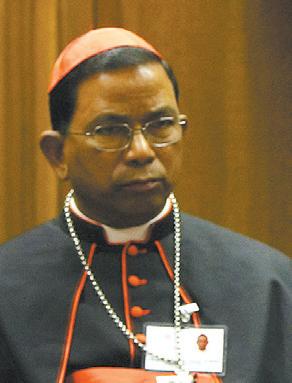
Cardinal Telesphore Toppo, Archbishop of Ranchi, visited the state of Orissa, where nationalist Hindu extremists wreaked havoc from December 2427. After his trip, the cardinal visited Prime Minister Manmohan Singh.
The Indian Catholic News Service estimated the extent of damage to include 53 churches, five convents, four priests’ residences, seven youth hostels, two minor seminaries, and more than 500 homes and 126 businesses.
“I was moved when I heard [the victims’] narrating the sordid stories,” Cardinal Toppo told CBCI News.
“The words of St Paul who asked the early Christians to weep with those who weep and rejoice with those who rejoice flashed through

my mind. I could see the faith of those victims - priests, religious sisters and Christian faithful strengthened.
Undoubtedly, the Church has been strengthened by the harrowing experience. I have no doubt that the Church will grow. No power on earth can stop that growth. When
the Church had to suffer, it has come out alive and vibrant.” But the cardinal appealed for justice in a letter he hand-delivered to the prime minister. The recent “prolonged and widespread” attacks against Christians of Kandhamal “are truly tragic,” he wrote. “A chain of unprovoked and
unjustified violence unleashed on a minority Christian community of Tribals and Dalits was undoubtedly preplanned.” Among the consequences, he cited the destruction of “the peace and harmony of poor villagers,” the marred sacredness of Christmas celebrations, and churches reduced
to ashes, “something which has deeply hurt the religious sentiments of Christians.”
The Cardinal further denounced the selective destruction of stores belonging to Christians.
Cardinal Toppo said that “local administration had proved to be quite ineffective and incapable of preventing and controlling the violent situation”.
It became a question of “political and official condoning, if not directly supporting, the activities of village groups spreading the ideology of hatred and violence,” the Cardinal said, adding that it was “a direct affront” to democracy and civil society.
The Cardinal asked the prime minister for an effective intervention “in order to restore peace and order in the affected areas and, above all, the confidence of the Christian community, which is still living in great panic.”
Cardinal Toppo further called for a process of rebuilding places and compensating victims, as well as identifying the guilty and bringing them to justice.
He asked that groups causing tension be investigated and appropriate action be taken, in order to prevent such deeds in the future.
The 68-year-old cardinal insisted on the duty of protecting religious freedom as mandated by the Indian Constitution.
The Prime Minister “promised to do everything possible to provide relief and security to the victims,” reported the cardinal after his meeting with Singh.
Church under attack: ‘We want to kill the priests only’
POBINGIA, India (CNS) - As the vicar of St Peter’s Church in Pobingia was supervising his parishioners making decorations on Christmas Eve, he got an urgent call from the parish priest less than 15 miles away in Phulbani, warning him that Hindu mobs were attacking churches.
Fr Prasanna Singh, the vicar, contemplated what to do next.
Police, ordered by the government to guard the church, fled when they heard 600 Hindus approaching and shouting anti-Christian slogans. Other police officers stood by and watched. As the priest fled through the backyard, the mob - armed with swords, axes, crowbars and spears - broke the gates and destroyed the church. “See, this is not the result of an earthquake,” Fr Singh said, pointing to the destruction around the church. The tall trees in front of the church were cut down, a 20-foot concrete cross on top of the church was torn down, and everything inside the church, rectory and student hostel was reduced to ashes.
The days of violence in India’s Orissa state began with Hindus destroying Christmas decorations at the local market. In retaliation, Christians burned Hindu shops and houses, followed by widespread violence over 600 square miles and four days.
Five Catholic churches, 48 village chapels, two seminaries, half a dozen hostels and four convents were destroyed. Dozens of Hindu homes and hundreds of Christian homes were burned and looted in the Kandhamal district.
Several Catholics have gone into hiding to evade arrest after 90 Christians were charged with setting fire to Hindu houses. Government officials have refused to distribute
“We prayed and held our hands together and resisted,” Sr Sujata said.
relief to Christians whose houses were burned down by Hindus and have urged Christians to give up the hiding men.
Many Christian families also fled deep into the jungle for safety.
“All of us are still scared,” said Sadananda Digal, a Catholic layman. Many of the 130 Catholic families of Pobingia, Digal said, were “still sleeping in the jungles in the night.”
Fr Laxmikant Pradhan, parish vicar of St. Paul’s Church in Phulbani, explained that a dozen Hindu youths barged into the church and destroyed their Christmas decorations. Then a mob of 400 people broke in and burned everything inside the church and his residence. “All this happened with the police watching from outside,” he said.
The mob headed to the adjacent St Paul’s minor seminary, where almost all rooms were reduced to black chimneys. Some members of the mob left riding the seminarians’ bicycles while other bikes were dumped in a well.
Meanwhile, in Balliguda’s Carmelite convent, a statue of Mary, now headless and burned, scares those entering its destroyed premise. “We do not have even a glass here to drink water,” said Sister Sujata, superior of the order.
When the heavily armed mobs broke in, the nuns hid under the staircase.
“When they spotted us, they wanted to drag the younger ones into the room and molest them,” said Sister Sujata. In addition to the four nuns, four young women
- including two novices - were in the convent, which has a hostel for 120 poor girls.
“We prayed and held our hands together and resisted,” Sister Sujata recalled. Fortunately, the assailants let them go, and the nuns jumped over the back walls and fled into the pitch-black darkness of the jungle. After a week, the nuns returned once federal security forces were

deployed there. At the Capuchin seminary in Barakhama, less than 10 miles from Balliguda, Father Chinnappa Payarda and 32 seminarians kept vigil in the bitter cold. They thought the danger was over, but a Hindu helper came running around noon on Christmas, shouting, “They are coming.” “We fled for our lives and could not take out any important document,” said the rector, who is worried about losing all the documents, including the original school certificates of a new batch of seminarians. As they fled in different directions, two semi-
narians were caught by the Hindu mob that spared them for being “too young.”
“We want to kill the priests only,” one of the mob leaders told the others, ordering them “not to harm” the teenage seminarians.
Fr Robi Subhashsunder, parish priest of Our Lady of Lourdes Parish about 75 miles from Barakhama, said that while he was on the phone briefing Archbishop Raphael Cheenath of CuttackBhubaneshwar about the trouble, the priest saw mobs breaking down his locked gates. He escaped safely.
I’m John Hughes, WA’s most trusted car dealer
Is it true that when people come to do business with me, they will be treated with courtesy, sincerity, professionalism and efficiency?
Is it true that “I want your business and I’m prepared to pay for it” and “I stand behind every car I sell”.
Is it true that I have over 40 technicians who are dedicated to getting my used cars in first class condition before sale?
Is it true that most of my sales are not from direct advertising but personal recommendation, repeat business and reputation?
Is it true I have my own finance company to assist good people with poor credit to buy cars from me?
Is it true I sell over 1,300 vehicles every month in Victoria Park and that is the biggest number from any one location in Australia?
Is it true that I have a warehouse selling cars under $10,000 and that I offer a full money back guarantee within one week?
January 16 2008, The Record Page 3
• • • • • • • Just over the Causeway on Shepperton Road, Victoria Park. Phone 9415 0011 DL 6061
HUGHES Absolutely! CHOOSE YOUR DEALER BEFORE YOU CHOOSE YOUR CAR JH AB 013
JohnHughes JOHN
Harsh statement: A boy stands at the entrance of a damaged church in the eastern Indian state of Orissa. India’s Catholic bishops have demanded a federal investigation into the Hindu violence against Christians in Orissa state and are seeking compensation for damages.
PHOTO: CNS/SANJIB MUKHERJEE.
Cardinal Toppo
The Parish And they came to adore Him - in parishes
The Record looks back on the Christmas week of praise and worship with help from St Columba’s parish in Bayswater and Our Lady of the Missions parish in Whitford
Welcoming Him: Approximately 5000 attended the 6.30pm outdoor Christmas Mass on the school oval at Whitford parish. Children acted out the nativity play and the three wise men rode in on camels (at right). At the end of Mass confetti bombs were set off (below) and doves released to celebrate Jesus’ birthday. There were newborn babies with their parents at all Masses representing the baby Jesus (below right). Meanwhile, parishioners at St Columba’s in Bayswater enjoyed a family Christmas Mass that welcomed a great increase in attendance. An estimated 550 joined in recalling Christ’s birth. “Many young families are moving to Bayswater and Fr Huynh Nguyen’s welcoming smile is a big hit with all the children,” parishioner Caroline said. Fr Nguyen is pictured with ‘baby Jesus,’ Samuel D’Cunha surrounded by the parish children and holding baby Samuel (bottom).
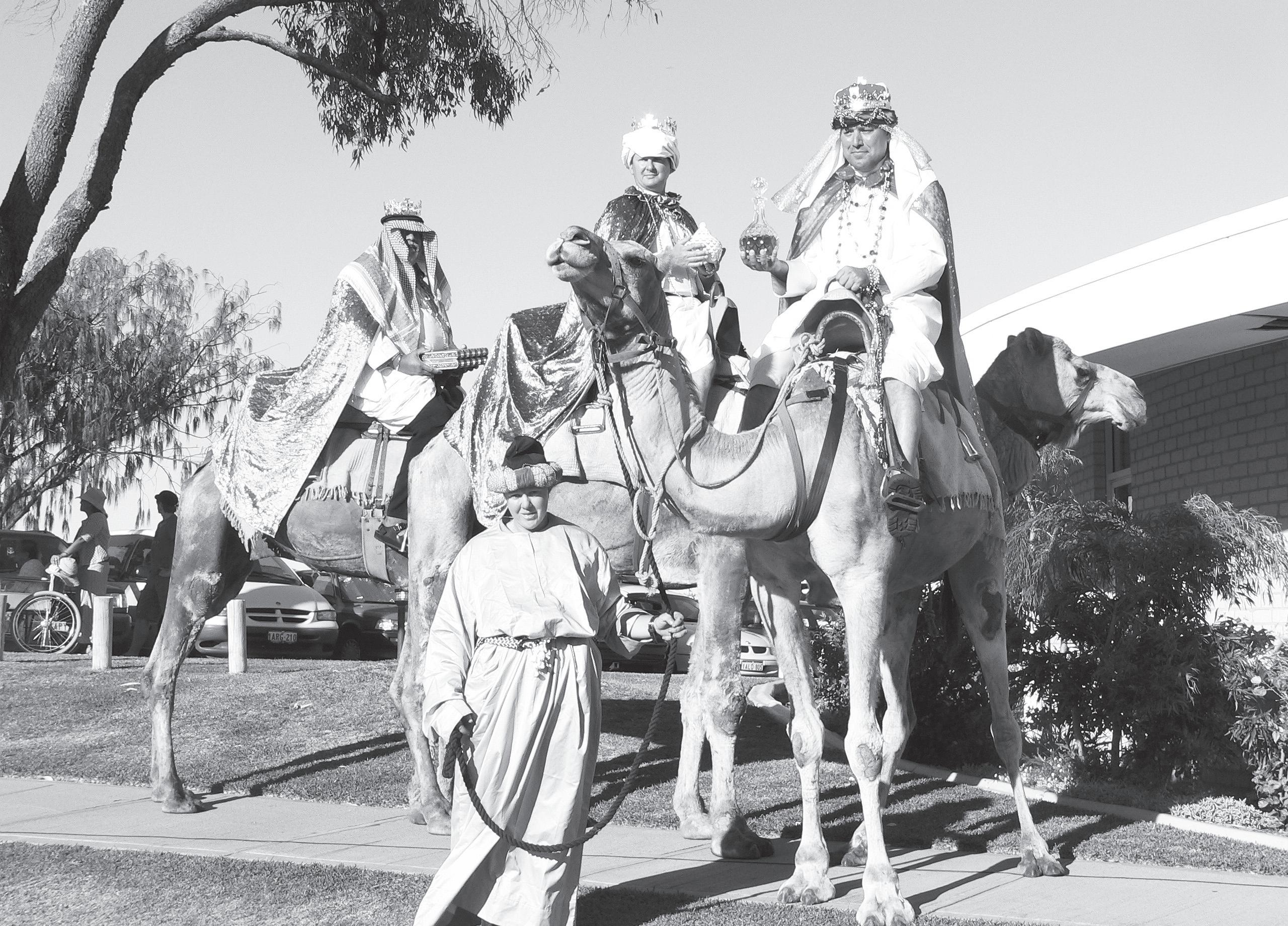
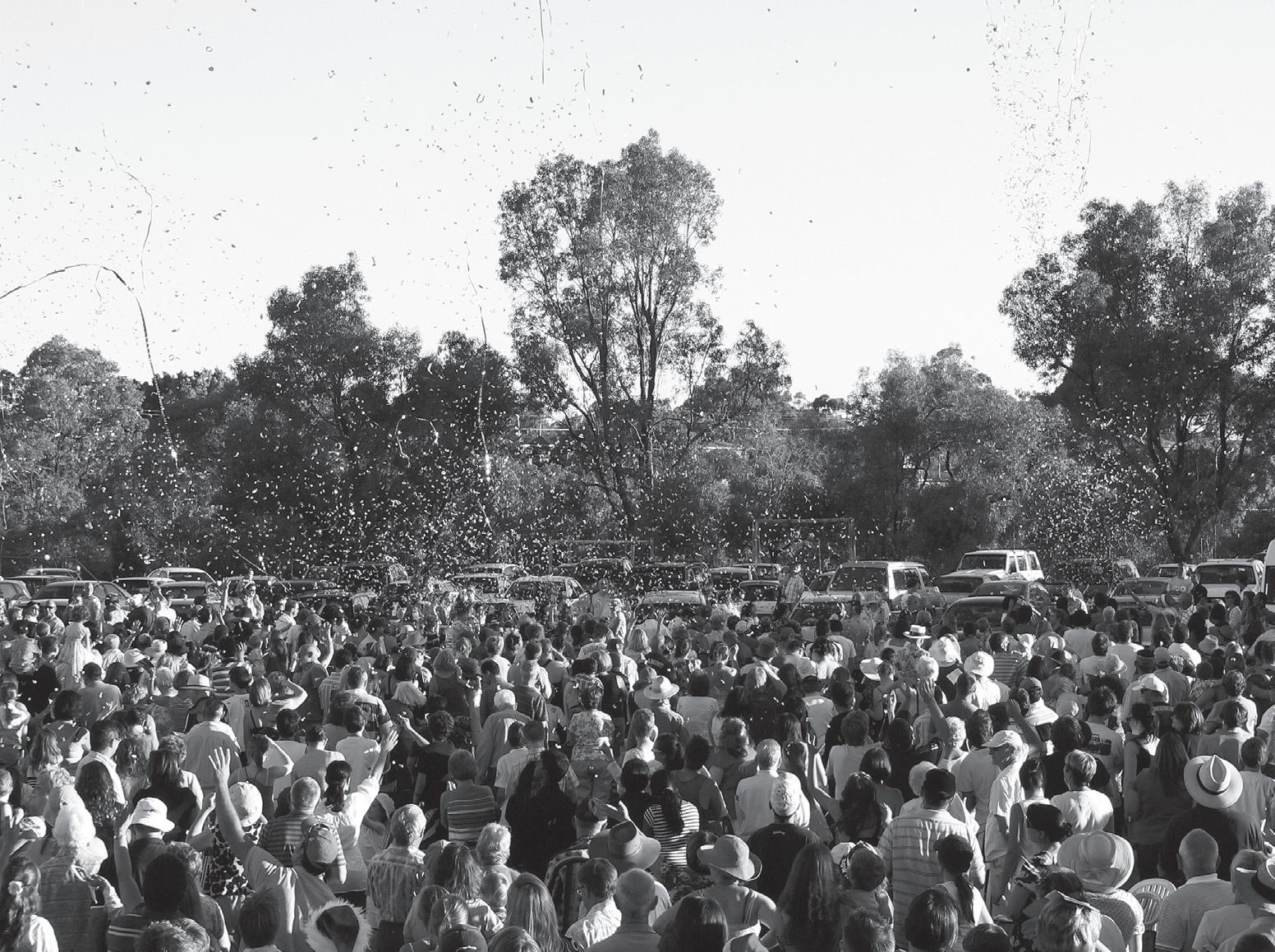


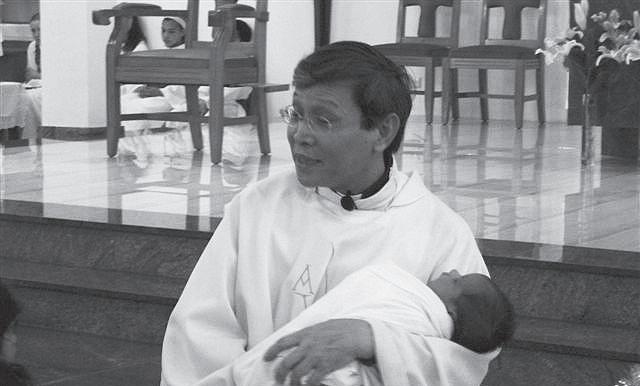

Page 4 January 16 2008, The Record
PHOTOS: PAULINE EGAN WHITFORD AND COURTESY OF ST COLUMBA’S IN BAYSWATER.
Perth Mint commemorates WYD
Commemorative coins featuring Pope planned for WYD08
The Perth Mint released a World Youth Day Sydney 2008 (WYD08) commemorative coin range on January 2, 2008 to celebrate the first visit by His Holiness Pope Benedict XVI to Australia.
The range includes two Vaticanapproved coin designs - a 1oz Gold Proof Coin and a 1oz Silver Proof Coin - each depicting the Pope, the WYD08 logo and the inscription ‘World Youth Day Sydney 2008” on the reverse.
Sydney will host the 23rd World Youth Day from July 15-20 with up to 125,000 international visitors expected to attend.
WYD08 chief operating officer Danny Casey believes the limited mintage coins will prove popular among both Australians and international visitors wishing to preserve the memory of this historic event.
“For many pilgrims and proud Australian hosts, WYD08 will be
one of the most significant events in their lives,” he said.
“We are delighted to be working with The Perth Mint to offer those involved a memento they can treasure and hand down through generations as a keepsake of their experience.”
Both commemorative coins are available worldwide and issued as legal tender under the Australian Currency Act 1965.
With a strictly limited mintage of no more than 1000 Gold Proof Coins and 25,000 Silver Proof Coins, they are expected to be snapped up quickly.
“The World Youth Day 2008 Commemoratives will mark the first time that a Pope has been depicted on an Australian legal tender coin,” said Ron Currie, sales and marketing director of The Perth Mint.
“We are extremely proud to be involved with an event that clearly means so much to youth around the globe.”
The design is ‘struck’ in the traditional way on the 99.99 pe cent pure Gold Proof Coin and is portrayed


in colour on the 99.9 per cent pure Silver Proof Coin. The coins are housed in timber display cases, protected by either
New habit for fledgling adorers
■ By Anthony Barich
Fr Doug Harris is taking his commitment to promoting Perpetual Adoration in the Archdiocese of Perth and beyond to new levels by taking on a habit.
The simple black garment is to be a public witness for the Apostles of Perpetual Adoration, an Association of Christ’s Faithful (a step towards becoming an Order) that Archbishop Barry Hickey approved in April 2006.
While only he will wear it for the moment, a layman – Tom Goldfinch, who lives with him in his Glendalough presbytery – is set to take his vows soon as a Brother of the Association of Christ’s Faithful. He started with 12 members, and today he has 32 – beyond his expectations - from suburbs from all parts of the Archdiocese, from Bunbury to Whitford; from Mirrabooka to Midland to Bullsbrook.
The only requirement for membership is to attend at least one hour of Eucharistic Adoration a week, and members are also encouraged to promote Perpetual Adoration in their own parishes and whereever they can. His youngest member is 18, the oldest is 80. Fr Harris says taking on a habit
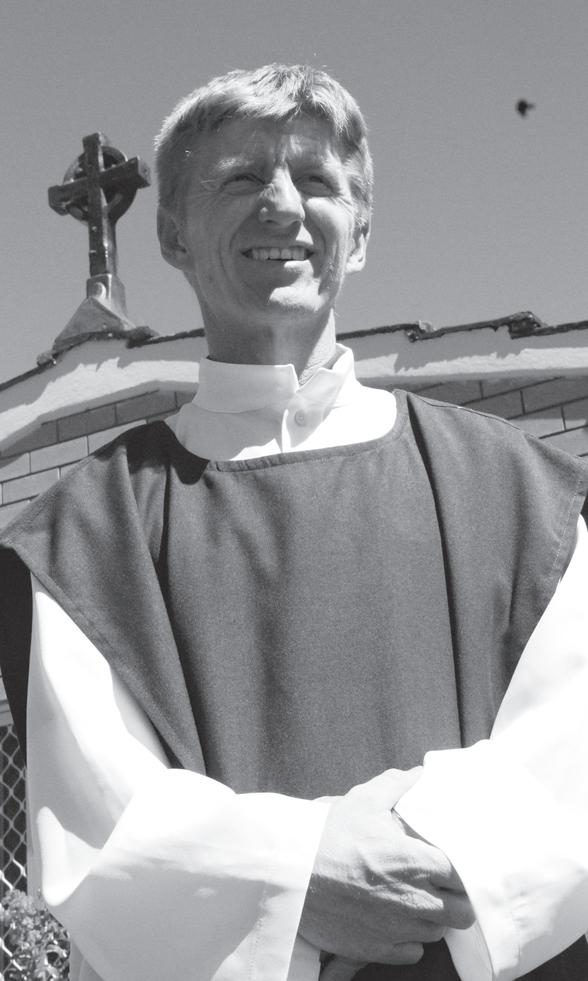
was a big step, but “I know the Lord wants chapels of Perpetual Adoration everywhere in a big way”, so he knows the inspiration comes from God.
“There is a lot of interest out there, and the people who have committed themselves to Perpetual Adoration are good people too who are committed to their faith,” Fr Harris said.
The reason for the habit was to create an identity, he said, to get people asking him questions about it, to give him the opportunity to
talk about Perpetual Adoration and his Association of Christ’s Faithful, and to let people know what they stand for and why they are “something different”.
“It’s a public statement that this Association exists,” he said.
“Today I am very keen to go all the way when it comes to the Church, to be a witness for the Catholic Church.
“Already the Lord has opened doors for Perpetual Adoration, independent of me,” Fr Harris said, adding that already four such chapels have begun operating in Java, Indonesia; one in Bali and another is on the way.
The busy life of being a parish priest of a burgeoning parish is restrictive on the time he can spend on his Perpetual Adoration mission, though he has his own chapel with a 24-hour roster filled at Glendalough.
He has also evangelised as far as Indonesia. Perth-based Redemptorist Father Hugh Thomas took him to a retreat for priests in the diocese of Surabaya, East Java, and Fr Harris helped establish two Perpetual Adoration chapels after organising a rally that was attended by 1500 people.
To join Fr Harris in his mission, call him on 9444 6131 or email doug@catholic.org.


a red (Gold Coin) or black (Silver Coin) box shipper featuring a colour image of Pope Benedict XVI. Recommended retail price for the
in brief
Family meals protect girls from eating disorders
Girls who eat at least five family meals a week are less likely to resort to extreme dieting to control their weight, American research has found.
Previous research has estimated that one in four homes does not have a dinner table for people to sit around, while even among households that do have one, only one in five uses it for eating.
The authors of the latest research, at the University of Minnesota, believe their findings are significant enough for doctors to stress the importance of families sitting down together to eat. Disordered eating habits, including vomiting, binge eating and taking diet pills, have been linked to depression, poor diet and the onset of potentially deadly eating disorders such as anorexia and bulimia.
However, the research found that the positive effect of family meals did not extend to boys, and it was not clear why.
Britons are eating out and eating more convenience food than ever before, a government study
1oz Gold Proof Coin is $AUD1750 or $AUD89.50 for the 1oz Silver Proof Coin. Prices include goods and services tax (GST).
The monetary denomination of the Gold Proof Coin is $AUD100, and the monetary denomination of the Silver Proof Coin is $AUD1.
Coins can be purchased from The Perth Mint (www.perthmint. com.au or freecall 1800 098 817), reputable coin dealers and selected Australia Post outlets.
All coins come with numbered Certificates of Authenticity.
World Youth Day 2008 – hosted by the Catholic Church, but open to all – is expected to draw up to 500,000 people to its largest event, a Final Mass at Randwick Racecourse and Centennial Park, which will be celebrated by Pope Benedict XVI.
Getting ready: Pictured are just two of the the coins released by the Perth Mint featuring Pope Benedict XVI on both gold and silver, with the silver featuring the image in colour. the coins are limited to no more than 1,000 gold coins and 25,000 silver coins.
shows. Mealtimes vary widely, with breakfast now any time between 7am and 11am, lunch sometimes skipped altogether, and the evening meal somewhere between 6pm and 10pm. Fast food sales grew by 73 per cent between 1995 and 2005.
However, the family meal is far from dead, and more than 60 per cent of those surveyed cook at least one meal a day from scratch.
Teenage fundraiser
A New York teenager away from school for a year because of ill health raised US$57,761 for a new school in Cambodia after reading about the hardships of life there.
Rachel Rosenberg, 17, visited the country last month for the opening of R S Rosenfeld School in a small village.
Last year she sent out hundreds of fundraising letters, sold T-shirts and offered naming rights for several structures in the school. The money she raised was supplemented by the World Bank ($11,108) and the Asian Development Bank ($13,000).
“Aim very high and you’ll be surprised at what you can achieve,” she said.
WYD Cross and icon make a surprise flying visit to Perth
Continued from Page 1
Christian Students’ national conference in Sydney. The nation-wide covenant community and religious order with which it is affiliated – the Missionaries of God’s Love - had also been asked to coordinate the journey of the Cross and Icon throughout Australia shortly after Sydney was appointed the venue for WYD in 2008. On the Tuesday night, many young people
embraced the Cross in acknowledgement of the symbol through which they have been saved after receiving God’s graces during the sacrament of Reconciliation.
Reg Firth, director of Perth’s Disciples of Jesus community told The Record that the Cross and Icon would also be visiting three other Disciples of Jesus Summer Schools across the nation during January in Melbourne, on the north coast of New South Wales and in Bathurst, NSW.
Costing over $1000 in freight the Cross and Icon did not stay under lock and key while in Perth.
“We couldn’t just keep it coopedup in here – we are called to share this gift,” Mr Firth said, adding that Jesus died for all, even those who did not believe and that he felt it was important to bring the Cross into their midst.
Mr Firth said Summer Schools had always had a focus on redemption and the cross; having the WYD Cross and Icon in their midst
allowed community members and participants to share in a symbol of unity with all those across the globe and within the universal Church.
The Cross and Icon will fly from Hobart to Perth on May 21, also the feast day of St Eugene de Mazenod, the founder of the Congregation of the Oblates of Mary Immaculate.
Therefore the day will focus on “walking in the Oblates’ steps” from Mazenod College, Lesmurdie, to the hills parishes down to Christian Brothers College in Fremantle to
the University of Notre Dame Australia and then to St Patrick’s Basilica.
For the next five days they will tour various parishes in Perth before heading east again. On June 3, however, they will return to Esperance and be transported in a tailor-made van and trailer to Kalgoorlie on June 4.
About 110 youth from Perth’s Disciples of Jesus Community will travel by bus to Sydney in a pilgrimage to WYD later this year.
January 16 2008, The Record Page 5 Local
News
FAMILYEDGE
FAMILYEDGE
The Nation
Thomas More may have inspired Bonhoeffer: Rudd
Launch of parish book sees PM delve into Catholic saints
■ By Paul Gray
New light has been shed on the religious attitudes of Prime Minister Kevin Rudd with the publication of a book by a Catholic parish in Canberra.
Mr Rudd says that while it may be an unfashionable view, he believes the Christian churches “have been an overwhelming force for good in Australian history.”
Mr Rudd also says the Catholic Church has been one of the major forming influences in the history of the Australian Labor Party.
The Party now holds power federally and in all six Australian states. The comments come in the first-ever edition of papers from the St Thomas More’s Forum, an initiative of St Thomas More’s Catholic parish in Campbell in the ACT.
Since February 2005, a group of St Thomas More’s parishioners have regularly invited prominent speakers to address issues of topical concern and debate on a Catholic platform.
Speakers who have visited the parish include Cardinal George Pell, Fr Frank Brennan SJ, former Federal Government Ministers Tony Abbott and Kevin Andrews, new Environment Minister and Midnight Oil rock star Peter Garrett and Canberra-Goulburn Archbishop Mark Coleridge.
Speaking at the parish, Mr Rudd addressed the topic of ‘Modern Labor and the Catholic Church.’
In his address, he voiced his belief

that the famous Catholic martyr St Thomas More may have influenced the Nazi era German Protestant martyr Dietrich Bonhoeffer in his campaign of courageous resistance to the Nazis. Mr Rudd is well-known for his admiration of Bonhoeffer.
“I have often wondered whether it was the international publicity surrounding Thomas More’s canon-
isation in 1935, precisely 400 years after More’s death, that inspired Dietrich Bonhoeffer that same year to establish a theological college at Finkenwalde for Germany’s Confessing Church,” Mr Rudd said.
“This was done at great potential peril to himself, coming only two years after Hitler became German chancellor.”
Mr Rudd says that Bonhoeffer, like St Thomas More, stood before his conscience and proclaimed: “Here I stand, Lord. I can do no other.” In a lengthy discussion of Catholic social teaching and the history of the Australian Labor movement, Mr Rudd says the Australian Catholic bishops have played a key role in making Australia different to other democracies, such as the United States of America.
The Prime Minister praised the role of Cardinal Patrick Moran, the early 20th century Archbishop of Sydney, who influenced Catholic members of parliament to support the Labor Party.
Mr Rudd said that Cardinals in the United States warned Cardinal Moran about their concern over some Labor policies, particularly pro-union industrial relations laws.
Mr Rudd cited a number of Catholic teaching documents which, he says, show the Church’s support for the role of trade unions.
These documents are the papal encyclicals Rerum Novarum (Pope Leo XIII) Laborem Exercens and Centesimus Annus (Pope John Paul II). Mr Rudd said that these “core documents of Catholic social teaching” do not in any way minimise the importance of unions. On other topics such as “family values” and personal morality, Mr Rudd appeared to distance himself from church teaching.
While not specifically mentioning Catholic teachings against abortion and sex outside marriage, he nevertheless said that as a politician, he has no wish to appeal to those concerned with “a narrowly defined set of questions concerning sexual morality.”
He criticised those people within the Christian community who, he says, have a “narrow, tick-the-
box approach to passing so-called Christian ‘morals’ tests.”
Mr Rudd then says: “I see very little evidence that an exclusive preoccupation with questions of personal morality is consistent with the spirit and content of the Gospels.”
Elsewhere, Mr Rudd quotes Jesus’s words about rendering unto Caesar the things that are Caesar’s and unto God the things that are God’s.
Mr Rudd said: “The Nazarene had the good sense not to define precisely what each proposition actually meant, ie what are those things which uniquely belong to Caesar, and what are those things which uniquely belong to God?”
Other addresses contained in the St Thomas More’s Forum Papers include a discussion of faith in the media, by Canberra Times columnist Angela Shanahan.
Mrs Shanahan, who has nine children and is a regular commentator on family life issues, described the opposition she has often received from women working in the media who hold a strictly “feminist” worldview.
“Most journalists are not nearly as clever as they think themselves,” she said. “They have limited educations and are infected by ideology, a situation which has actually become worse with the advent of communications degrees.”
Most journalists have set frames of reference and limited imaginations, she says.
Consequently they believe that all things female have been looked at from a feminist perspective, not simply as one way of viewing things, but because “that was the only perspective.”
Copies of the St Thomas More’s Forum papers can be ordered from PO Box 68 Campbell ACT 2612, or via email at sttmforum@homemail.com.au
Jensen fires salvo at North American brethren over sex
■ By Paul Gray
Sydney Anglican archbishop Peter Jensen has hit out at his fellow Anglicans in North America, accusing them of undermining the Third World Anglican church by pursuing a “non-biblical” line on sexual ethics.
At the same time, the Archbishop has given notice of an important international Anglican meeting, the Global Anglican Future Conference, to take place in the Holy Land next June.
The Archbishop reveals he is part of the planning team for the conference, whose purpose is to bring together Anglicans from around the world who wish to maintain “the biblical view of sexual ethics.”
The conference can be seen as part of a worldwide counter-attack, within the Anglican communion, against those who have attempted to liberalise Christian teaching to give a de facto blessing to sexual relationships outside marriage.
The news highlights the growing international profile of the wellknown Sydney Anglican bishop.
In a post-Christmas article, Archbishop Jensen has told Sydney Anglicans of the importance of retaining “biblical standards” on the sexual ethics question. The
Anglican churches in Canada and the United States have led the way in transgressing biblical boundaries, Archbishop Jensen says.
The Global Anglican Future Conference will take place in Israel because this venue “symbolises the biblical roots of our faith as Anglicans,” the Archbishop said.
The meeting will take place a month before the next Lambeth Conference in England.
The Lambeth conference is the largest regular meeting of Anglican bishops from around the world, and is convened once every 10 years by the Archbishop of Canterbury.
Several African bishops of the Anglican communion have indicated that they will not be attending this year’s Lambeth Conference because to do so would be to acquiesce in actions by the North American Anglicans. The Sydney Archbishop defends this decision by his African colleagues.
“They are not ending the Anglican communion, or even dividing it,” Archbishop Jensen says. “They are simply indicating that the nature of the communion has now been altered by what has occurred.”
Archbishop Jensen says that at the last Lambeth Conference in 1998, the overwhelming majority of the world’s Anglican bishops had made it clear that they maintain the
biblical view of sexual ethics – “that sexual relationships are reserved for marriage between a man and a woman.”
However, recent actions by US and Canadian Anglicans to endorse same-sex relationships are in defiance of that 1998 consensus, Archbishop Jensen argues.
Archbishop Jensen is clearly referring here to actions such as the 2003 consecration by the Episcopal (Anglican) Church in the USA of Gene Robinson, an openly noncelibate homosexual man, as Bishop of New Hampshire.
The Canadian and US church actions have also caused problems for many North American Anglicans who want to “maintain orthodoxy” within their churches, the Archbishop says.
While wishing to remain known as Anglicans, these orthodox North American believers have felt obliged to withdraw their fellowship from “those who they perceived had broken God’s law.”
The North American actions have produced a particularly difficult result for Anglicans living in predominantly non-Christian countries, Archbishop Jensen says.
“In particular, the churches of the Global South had to own the name ‘Anglican’ while living in societies where the actions of the
Americans was condemned by all, especially Muslims. “The action of some North Americans severely hurt the witness of these churches,” Archbishop Jensen says.
The liberalising of sexual ethics has also hindered the work of Third World Anglicans who live in situations where Christians are in a minority, he says. Archbishop Jensen says that since 2003, patient attempts have been made throughout the Anglican communion worldwide to “call the offending North Americans back to biblical standards.” The Archbishop says the fall-out from the controversy has been such that “we will never go back to being the communion that we once were.” The Sydney Archbishop claims that some American Anglicans are as committed to their new sexual ethics as to the Gospel itself, and that they “intend to act as missionaries for this faith, wishing to persuade the rest of us.”
Archbishop Jensen says that Anglicans around the world, including in Australia, need to be vigilant in guarding the teaching and interpretation of Scripture. He urges his clergy and laity to pray for the success of the Anglican Future Conference. He says it is an occasion when Anglican Christians from around the globe who share
a fundamental trust in the authority of God’s Word can meet and network together. The Archbishop says the purpose of the conference in Israel in June is not to take the place of the Lambeth Conference, but rather its aim is to “draw biblical Anglicans together for urgent consultation.”
It will be a meeting which “accepts the current reality of a communion in disarray over fundamental issues of the Gospel and biblical authority.”
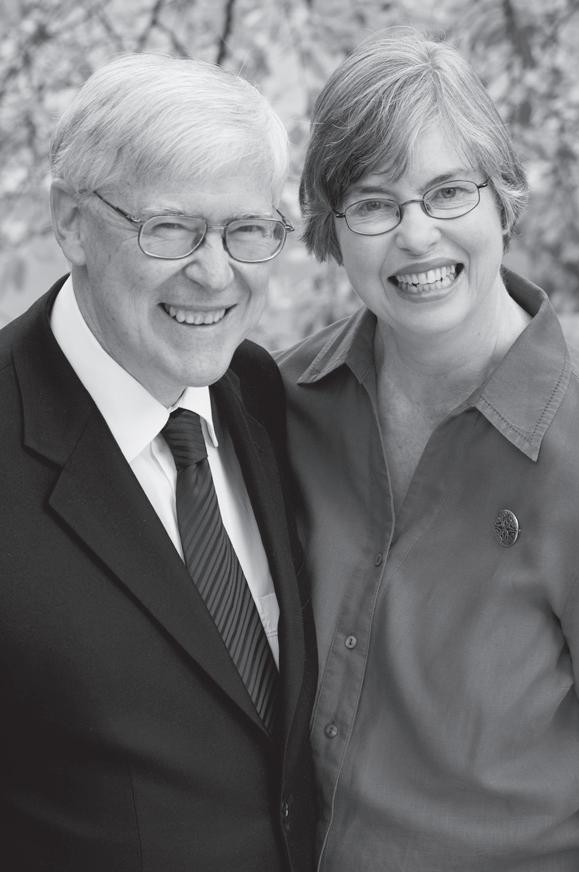
Page 6 January 16 2008, The Record
Anglican Archbishop Peter Jensen and his wife
Inspired: New Prime Minister Kevn Rudd outlined to a parish in Canberra how famous Catholic martyr St Thomas More may have influenced his own inspiraiton, the Nazi-era German Protestant maryr Dietrich Bonhoeffer. PHOTO COURTSY OF KEVIN RUDD’S OFFICE, CANBERRA
In
brief
Don’t divorce in the heat of the moment: AFA
With extensive media coverage devoted to the so-called “divorce season” phenomenon, the Australian Family Association has appealed to couples not to start divorce proceedings on the spur of an unhappy moment.
The Association’s Mrs Angela Conway said Christmas and New Year period are a danger period for many relationships, but she would encourage couples to look closely at their options before divorcing.
“There is a growing amount of research showing that divorce rarely solves longterm problems, or brings the peace and happiness that people think it will,” she said.
A similar view, warning couples against rushing into divorce before receiving expert advice, was also voiced this week by Anne Hollands from Relationships Australia, speaking on the Nine network’s Today show.
Mercy Sisters go green in NSW
A group of Mercy Sisters in NSW has established an ecological learning community to promote “right relationship with the earth.”
The Bathurst Congregation of Mercy Sisters in central western NSW will use their property at St Joseph’s Mount in Bathurst to develop the Rahamim Ecological Learning Community.
The sisters describe this new ministry as “one response to the call to ecological conversion from within the Church.” The name Rahamim comes from a Hebrew word meaning “mercy.”
Catholics back Crowe’s move to terminate pokies

A move initiated by film star Russell Crowe (pictured) has earned the support of the St Vincent de Paul Society and the Catholic welfare agency Centacare in Sydney. The Catholic groups supported a move by South Sydney Leagues Club which recently voted to sell off its poker machines. Sydney’s Leagues clubs were among the pioneers of poker machine gambling in Australia, but after widespread concern about the social damage caused by pokie addiction, the famous “Rabbitohs” club has now reversed the trend. The move to get rid of the club’s poker machines was kicked off by the club’s high-profile co-owners, Hollywood star Russell Crowe and businessman Peter Holmes a Court. PAUL GRAY
The Nation
Channel 7 film to confirm Christians really do believe in the divinity of Jesus Christ
■ By Paul Gray
An Australian-made television documentary which endorses the view that Christians have always believed in the divinity of Christ will be screened nationally by the Seven network on Good Friday.
The Christ Files, presented by Australian author and historian John Dickson, presents a counterbalancing view to the steady stream of media content, such as The Da Vinci Code, which attacks traditional Christian beliefs as fraudulent.
The producers of The Christ Files confirmed to The Record that the program has been accepted for nationwide broadcast by Seven this Easter.
Based on a 2006 book of the same title, The Christ Files vindicates the belief that the early Christian Church, dating from the time of the apostles and before the writing of the entire New Testament, unequivocally believed that Jesus was the Son of God.
Recent books and films such as The Da Vinci Code have attempted to enshrine the view that this belief is a hoax invented by later generations of the Christian Church.
However Dr Dickson’s The Christ Files argues that scholarship proves “beyond doubt” that Jesus’ teachings, death and Resurrection, together with his status as the Messiah, were being taught by Christian missionaries and committed to memory by Christian communities in the early 30s AD.
The book version of The Christ Files was described by Professor Alanna Nobbs, head of the Department of Ancient History at Macquarie University, as resting on “a sound basis of scholarship, both
Business lures children into virtual worlds
Virtual worlds for children are the next big distraction for the younger set as media conglomerates capitalise on the success of websites like Club Penguin and Webkinz.
Second Life, a virtual world for adults (more or less) has attracted a lot of attention, but it turns out that children’s versions are proving much more popular.
Already 8.2 million children are members of these sites - part online role-playing game and part social scene - and their number is predicted by one marketing analyst to rise to 20 million by 2011.
Club Penguin, where members

English and non-English speaking, as is entirely necessary in this field.”
Dr Dickson argues that the time delay between the oral teaching tradition about Jesus’ divinity and the writing down of the entire New Testament was actually a much shorter time delay than was common in the ancient world.
By comparison, the earliest biography of the founder of Islam, Mohammed, was composed 125 years after his death. Nevertheless
pay US$5.95 a month to dress and groom penguin characters and play games with them, attracts seven times more traffic than Second Life. Disney last month introduced a Pirates of the Caribbean world aimed at children 10 and older, and it has worlds on the way for movies Cars and Tinker Bell, among others. Nickelodeon, Warner Brothers and toy companies are following suit.
A British company suitably named Mind Candy has launched a world called Moshi Monsters.
The trend signals a change in the way children access the media, from the television screen to the Internet. It also creates opportunities to escape from the confines of reality as run by mum and dad. “I get to decide everything on Club Penguin,” says one nine-year-old. Shopping is also a powerful draw-
Media misses moral assumptions: IPA chief
Australia makes life extremely difficult for politicians who confess their religious faith, said the head of a prominent national economics think-tank. John Roskam, director of the Institute of Public Affairs, said in Australia, there is always a chance that a politician who talks about God, or even a god, will be laughed at. There are several contradictions in the way faith and politics are treated in Australia, he argued. One of these is “the inability of much of the media to appreciate that a secular viewpoint carries as many moral assumptions as does one determined on religious grounds.”
scholars still take such biographies seriously. The gap between the time of Jesus’ life and the first full written account is only 40 years, Dr Dickson argues.
Dr Dickson is the author of more than 12 books on aspects of Christianity.
With his colleague Dr Greg Clarke, who is Director of the Christian Studies Institute at Macquarie University, Dr Dickson has recently established a new institute called the Centre for Public Christianity.
card. The same boy bought his penguin “a fireplace, a flat-screen TV and a Christmas tree” for Christmas. It may all be a passing fad, but privacy and safety are concerns, along with the commercialisation of childhood. “We can-
The new Centre aims to bring arguments from Christianity to bear on issues in public culture and the world.
Speaking from Sydney last week,
Dr Dickson’s assistant, Mrs Jenny Glen, said that the views contained in the new documentary will probably be welcomed by many members of the mainstream churches, such as Catholics.
It does not present the sort of view popularised by The Da Vinci Code, she said.
not allow the media and marketing industries to construct a childhood that is all screens, all the time,” says Susan Linn, a Boston psychologist and director of the Campaign for a Commercial-Free Childhood.

January 16 2008, The Record Page 7
Yes they did: The Christ Files, presented by Australian author and historian John Dickson is planned to air on Channel 7 at Easter. The documentary confirms the history of orthodox Christian belief in Christ’s divinity, in contrast to widely popular versions of history published in recent decades like The Da Vinci Code.
PHOTO: COURTESY DR JOHN DICKSON
FAMILYEDGE
Perspectives

Come, Holy Spirit, fill our hearts
Momentum is gathering towards World Youth Day 2008, and the Disciples of Jesus are doing their bit to ensure that it’s more than just a holiday for the thousands of West Australian Catholics who will descend on Sydney in July.
■ By Anthony Barich
The Disciples of Jesus Covenant Community’s annual Summer School of Evangelisation in Osborne Park last week laid the foundation for lives to be changed at World Youth Day in Sydney from July 15-20.
Waste of a page
As a subscriber to The Record, I find it an excellent Catholic paper. However, I was surprised to see a full page wasted on an article about an interview with actress Nicole Kidman The Record 9/1/08). Surely the secular press write enough articles about her without the Catholic press getting in on the act.
One wonders how she can espouse her Catholicity while at the same time promoting her film “The Golden Compass” and recommending to her friends that they can take the children to see it when in actual fact the film is an attack on the Catholic Church.
Madge Fahy, Ashwood, Victoria
British findings should be a warning to us
Thank you for your article on the state of Christian Britain.
Whilst it is interesting to read “Roman Catholics have overtaken Anglicans as the country’s dominant religious group,” I suggest it would be even more interesting to compare those figures with the rise of Islam in Britain.
I think those “findings should act as a wake up call” not only to British Christians but to Christians everywhere, including us here in Australia, The Great South Land of The Holy Spirit. Lindsay Evans
With the World Youth Day Cross and Icon present for two days of the charismatic retreat and catechetical week, there was a strong focus on helping youth realising their obligation before, during and after WYD08 to be witnesses.
The 3.8 metre-high wooden cross was first built in the Holy Year of 1983.
At the end of the year, Pope John Paul II gave this cross as a symbol of Christ’s love for humanity.
In 2003, John Paul II gave young people a second symbol of faith to be carried in the world - the Icon of Our Lady, ‘Salus Populi Romani’, a contemporary copy of a sacred and ancient icon housed in the first and greatest basilica to Mary the Mother of God in the West, St Mary Major.
The Summer School’s theme, “A New Heart, A New Spirit” complemented the WYD08 theme, “You will receive power when the Holy Spirit comes upon you; and you will be witnesses… to the ends of the earth.” (Acts 1:8)
With catechesis, Adoration of the Blessed Sacrament, daily Mass, reflection and Reconciliation, this year’s Summer School was, as usual, an extravaganza where the riches of the Catholic Church were presented to and duly embraced by youth.
“We’re in the home stretch leading up to WYD now, and youth need to know that this is more than just an organised event that’s ‘bigger than the Olympics – lives will be changed,” said Disciples of Jesus’ Perth coordinator Reg Firth.
Last week’s Summer School was the first that it was not ‘live-in’, to save on costs for the youth, who are up for hundreds of dollars in airfares and accommodation for
WYD08 in Sydney from July 15-20.
“At the start of the WYD year, this Summer School helps remind us that the Sydney event is all about God; being led by God and being empowered by God as we head towards WYD08,” Mr Firth said.
“The Holy Spirit will empower us with courage and boldness.”
He said that by bringing the WYD Cross down to Scarborough Beach, the Summer School participants made a public statement that the Cross and the salvation it represents through Christ is not just “meant for us, but for everyone, the average Aussie included”.
Mr Firth said that the Summer School was blessed this year by having such a dynamic speaker in
“Our role is to ensure people are spiritually ready for WYD08, so that they can have a real encounter with Jesus; to know their mission in life, which is to make disciples of people to the ends of the earth,” Mr Firth said, “and Anita really was a blessing in helping our young people in that journey.”
Ms Parker alerted the participants to their responsibility when they return from WYD to share what they have experienced in their everyday lives.
Archbishop Barry Hickey also addressed the Summer School on the Friday night, and was edified as the participants prayed for him.
 Perth’s WYD coordinator Anita Parker giving a lecture series.
Perth’s WYD coordinator Anita Parker giving a lecture series.
Page 8 January 16 2008, The Record
Letters
Perth
Calling down the Spirit: Participants of the Disciples of Jesus Covenant Community’s Summer School of Evangelisation pray over Archbishop Barry Hickey at Osborne Park. The gesture was also a symbol of the community’s commitment to the Archbishop of Perth.
PHOTO: MICHAEL SANDRINI
Humbling: A participant of the Disciples of Jesus Summer School embraces the Cross at Scarborough Beach last week.
PHOTO: MICHAEL SANDRINI

Let no one touch the child
The Church blesses the worldwide moratorium on abortion
The initiative was born in the secular camp, but the Catholic hierarchy has immediately supported it. The Church’s new politics for life and the family has a successful precedent: the 2005 Italian referendum in defence of embryos. A preview of an analysis by Luca Diotallevi
■ By Sandro Magister
The birth of the child Jesus, the feast of the Holy Innocents, the Sunday of the Holy Family, the feast of the Mother of God... In Rome, in Italy, and in Spain the recent Christmas festivities have found an unexpected, spectacular echo not only in the Church but also in society as a whole, even its most secularised sectors.
Family and birth. These are the two words that have resounded the loudest, among both Christians and secularists.
Benedict XVI made the family the focus of his message to the world for the Day of Peace celebrated on January 1, on the family as the “primary agency of peace.”
The Catholics of Spain also dedicated a day to the support of the family, with a grand Sunday gathering in Madrid on December 30. A similar mass Family Day was held in Italy, in Rome, last May 12.
The next appointment will perhaps be in Berlin, in the heart of deChristianised Europe.
The Madrid gathering was strongly marked by the Church. It unfolded as an immense outdoor liturgy, presided over by bishops and cardinals, and offered for the observation and reflection of all. The central moment was a television linkup with the Pope, who at the Angelus, from Rome, spoke directly to the crowd in Spanish.
On May 12, 2007, in Rome, the square outside of Saint John Lateran was also filled mainly with Catholics. But it was not the hierarchy of the Church that called and presided over that Family Day. It was, instead, a citizens’ committee headed by Savino Pezzotta, a Catholic, and Eugenia Roccella, a feminist of radical secularist formation. Also speaking from the stage were Giorgio Israel, a Jew, and Souad Sbai, a Muslim. The form of Continued - Vista 2

January 16 2008 Vista
PHOTO: JIM YOUNG, REUTERS
Symbolic statement: Pro-life activist Josh Alcorn demonstrates in front of the Supreme Court in Washington last April after the court upheld the nationwide ban on the partial-birth abortion procedure. Recent developments in Italy raise the quesiton whether abortion is beginning to disturb consciences outside the Christian fold around the world.
Continued from Vista 1
family presented for the attention and care of all was not primarily the one celebrated by the Christian sacrament, but the “natural union between man and woman” inscribed in the civil constitution.
An initiative that goes against the grain even more emerged in Italy, during the recent Christmas festivities: the promotion of a worldwide moratorium on abortion, after the moratorium on the death penalty approved by the United Nations on December 18.
It goes against the grain because it was conceived and launched by a non-Christian intellectual, Giuliano Ferrara, founder and director of the opinion newspaper il Foglio And because it was immediately supported by the newspaper of the Italian bishops’ conference, Avvenire, but also by personalities of other beliefs, including Roger Scruton of England, “the most influential philosopher in the world” according to The New Yorker
The chronicle of this moratorium on abortion throws light on the manner in which the Church of Benedict XVI, of his cardinal vicar Camillo Ruini and the Italian bishops’ conference, is acting on the political terrain.
This Church does not demand that only what can be accepted and understood by faith be made law. But it is fighting resolutely in defense of those norms that it knows are written in the hearts of all men.
Respect for the life of every human being, from the very first instant of its conception, is one of these universal norms that the Church views as non-negotiable. The fact that there are non-Catholics standing up in defence of all unborn life is for the Church a happy confirmation of the universality of this commandment.
The Church of Benedict XVI, Ruini, and cardinal Angelo Bagnasco, the current president of the Italian bishops’ conference, has thus looked very favourably on the fact that a non-Catholic like Ferrara has taken the initiative of launching the moratorium on abortion.
Because in effect, this is what has happened. Ferrara launched his first appeal in favour of the moratorium on abortion on the television program Otto e mezzo, the same evening as the UN’s approval of the moratorium on the death penalty, December 18.
The following day, December 19, this appeal appeared in print in il Foglio. The afternoon of that same day, L’Osservatore Romano published on the front page an interview with cardinal Renato Martino, president of the pontifical council for justice and peace:
“Catholics do not consider the right to life as something that can be negotiated on a caseby-case basis, or partitioned. [...] The clearest example is that of the millions and millions of killings of certainly innocent human beings, unborn babies.”
On December 20, Avvenire, the newspaper of the Italian bishops’ conference, gave its full support to the moratorium on abortion, with a front-page editorial by Marina Corradi and an interview with Ferrara.
On December 21, Ferrara announced that he would be fasting from Christmas Eve to the first day of the new year, in support of public financing for the Life Assistance Centres (CAV’s) that help mothers who are tempted to have abortions.
In effect, during the following days the Lombardy Region and the municipal government of Milan supplied 700,000 euro to the CAV at Mangiagalli, the Milanese clinic that performs the greatest number of abortions. Last year at this clinic, the CAV was responsible for 833 births, by helping mothers in difficulty. In total, it is calculated that all of the CAV’s operating in Italy have saved about 85,000 babies from abortion from 1975 until today.
Meanwhile, pages and pages of il Foglio have been filled with letters in support of the moratorium. A growing, unstoppable torrent of letters. Some are simple expressions of agreement, but most of them include sophisticated reflection, stories, experiences of fathers and mothers, painful accounts, and enthusiastic endorsements. Hundreds, thousands of letters in which the absolute protagonist was the tiny little being formed from conception – welcomed, loved, exalted. It is difficult to imagine a Christmas celebrated with music
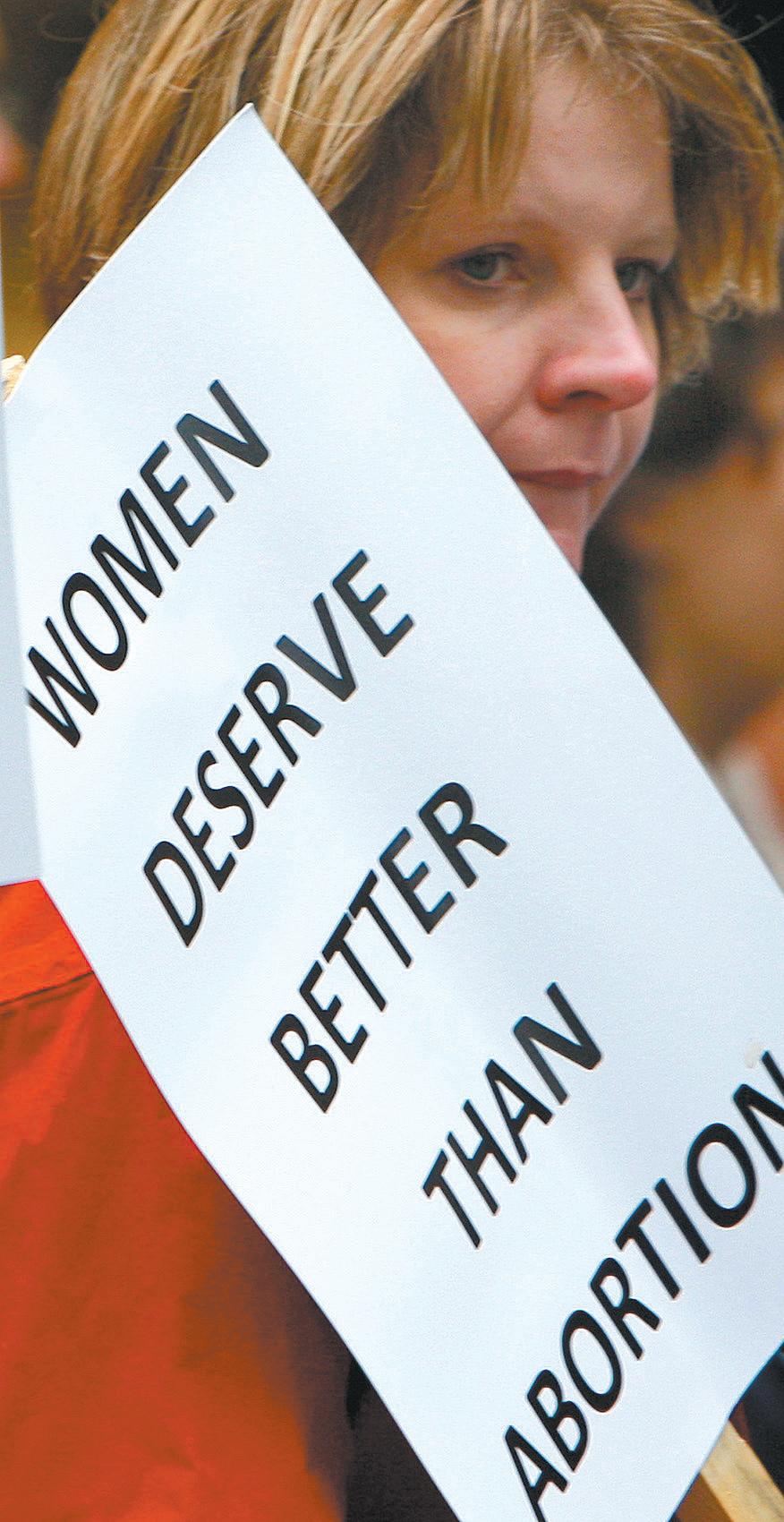
Not going away: a protester marches during an anti-abortion demonstration in central London last October marking the 40th anniversary of the 1967 Abortion Act, which allows abortions to be carried out in Great Britain up to 24 weeks after conception. Are pro-lifers beginning to sense a seachange in attitudes to abortion. In Italy, a moratorium has been proposed not by abortion’s traditional Catholic foes but by feminists and atheists, among others.
more appropriate than this concert of letters.
Most of the letter writers are ordinary people. Many are Catholics, but they do not belong to the élite of the associations that come running as soon as there is an appeal to be endorsed. The few organisational names that appear here and there are those of the CAV’s, or of the Family Forum, or of Science & Life: the associations directly involved in this arena. It seems that most of the writers are “Sunday” Catholics, those who go to Mass but are otherwise invisible. Or they are the audience of the popular Radio Maria. But there are also a number of others who are not Catholics. It is an Italy that is hardly present in the major media, but that the moratorium on abortion has unexpectedly brought to light. It is an Italy that may practice its faith very little, but in which the Catholic imprint is deep and difficult to remove. even among the non-baptised.
But what does the moratorium on abortion propose in practical terms? Ferrara dreams of “five million pilgrims of life and love, all in Rome next summer.” To ask for two things from governments all over the world: first, to “suspend every policy that provides an incentive for the practice of eugenics”; second, to “write into the universal declaration of human
rights the right to be born.”
With a manifesto prepared by personalities of various perspectives, like Didier Sicard of France, Italy’s Carlo Casini, Roger Scruton, from England, the American bioethicist Leon Kass, and the new US ambassador to the Holy See, Mary Ann Glendon, “naturally excluding any form of blame, and far more any legal persecution of women who may decide to have an abortion” as permitted by the laws in effect in the various countries.
On the evening of December 31, interviewed on a widely popular television news program, cardinal Ruini summarised the Church’s position as follows:
“I believe that after the good result obtained in regard to the death penalty, it is very logical to recall the topic of abortion and ask for a moratorium, at least to stimulate and awaken the consciences of all, to help people to realise that the baby in the mother’s womb is truly a human being, and that its suppression is inevitably the suppression of a human being.
“In the second place, it may be hoped that this moratorium will also provide a stimulus for Italy, at least for the complete application of the law on abortion, which claims to be a law intended for the defence of life, and then to apply this law in those areas that can truly
be in defence of life, and perhaps, thirty years after the passage of this law, to update it in keeping with the scientific progress that, for example, has made great steps forward in regard to the survival of premature babies. It becomes truly inadmissible to proceed with abortion at a point where the fetus could survive outside of the womb.”
L’Osservatore Romano gave emphasis to these words from Ruini, and cardinal Bagnasco restated the same concepts in the most widely circulated secular Italian newspaper, Corriere della Sera, on January 4.
“the Church is no longer so timid and directionless as it was in Italy after the catastrophic defeat of 1981...”
And these words were followed with actions. During the same days, five hospitals in Milan were given new “guidelines” for the application of the national law on abortion, prohibiting abortion after the twenty-first week following conception (the previous limit was at the twenty-fourth week) and prohibiting selective abortion in a twin pregnancy in absence of real physical or psychological difficulties on the part of the pregnant woman. These “guidelines” will soon be adopted by the entire Lombardy region.
This last is another sign that the appeal for a moratorium on abortion falls on more fertile soil today than in the past. Secular thought is no longer so unified in denying human dignity to the fetus and giving significance only to the woman’s self-determination. And the Church is no longer so timid and directionless as it was in Italy after the catastrophic defeat of 1981, when a Catholic-sponsored referendum for the repeal of the law on abortion obtained just 18 per cent of the vote.
The Church in Italy is today, instead, fresh from a victory in another referendum in defence of the life of the embryo, held on June 12, 2005. It is a referendum whose success – according to a very recent study – was noticeably influenced by the Catholic selfidentification of the Italian people.
Reviewing this study is of great interest for understanding better the Church’s current modes of operating in Italian society: a society that – unique in the world, in these terms – keeps alive the characteristics of a mass Catholicism in a context of advanced modernisation.
The study will appear in the next issue of Polis, the scholarly journal of the Istituto Cattaneo in Bologna. The author is Luca Diotallevi, professor of the sociology of religion at Roma Tre university and author of studies of the Italian religious “anomaly” that have been published, among other places, in the United States.
The referendum of June 12, 2005 was promoted in Italy by secular groups and parties in order to remove important points from law 40 of 2004 on assisted procreation, in practice to liberalise the selection, use, and elimination of artificially produced embryos.
To defeat the referendum, the Catholic hierarchy asked the faithful and all citizens not to vote. And in effect, this is what happened. 74.1 per cent of voters abstained. The “yes” votes reached only 22 per cent, and did not attain a majority even in the most secular and leftist Italian provinces.
To evaluate the influence of the religious factor on this result, Diotallevi cross-referenced four pieces of data: the “yes” votes for the referendum, Catholic self-identification, civic consciousness, and social modernisation.
As the main measure of Catholic selfidentification, Diotallevi took the names of the participants in the “eight per thousand” in favour of the Church. In Italy, taxpaying citizens are able to indicate each year, in their income statements, who should receive eight thousandths of the tax revenue claimed by the state: if this should be given to the state,
or com etc Ca hav soc as spe thi ext Ca par “ye
Vista 2 January 16 2008, The Record
of – B Reg end 40 wit tho we are be in hig not wit ern Ital tin ern stro ma is m wo duc to hie wit res abs the Ca rag per the ed obj ope er For her at a Ch a “l ref to ma to Fro the num teg the cen cal and com ety dem em reli reli pat ties In the the gre Ch fam San
PHOTO: CNS/TOBY MELVILLE, REUTERS
to the Catholic Church, or to the Jewish mmunity, or to the Protestant Churches, cetera. Almost all of the selections go to the atholic Church, in growing numbers that ve recently reached 90 per cent.
For the level of civic consciousness and cial modernisation, Diotallevi again took his measure qualitative data, which he ecifies in his study. The fact is that one ng above all emerges from all the data: the tremely strong inverse correlation between atholic self-identification expressed by the rticipants in the eight per thousand, and the es” votes for the referendum.
In the provinces with the lowest numbers tax contributions for the Catholic Church Bologna, Livorno, Florence, Ravenna, Siena, ggio Emilia... – the “yes” votes for the referdum showed higher percentages, at around per cent.
The opposite took place in the provinces th almost total participation in the eight per ousand for the Church. Here the “yes” votes re very few, at 10 per cent or even less.
These last provinces are in the south, and also the least “civic” and modernised. But careful: for most of the Italian provinces, particular those of Lombardy and Veneto, gh levels of Catholic self-identification do t at all coincide with backwardness, but th highly advanced levels of social modnisation and civic sensibility.
In other words, the religious element in ly does not appear as a relic of the past, desed to disappear with the advance of modnisation, but remains alive in a context of ong modernity. And moreover –Diotallevi aintains in the last part of his study – it, too, modernising itself.
Catholic self-identification, he writes, ould not have been enough by itself to proce the result of the 2005 referendum. It had be activated. And this is what the Church’s erarchy did, with cardinal Ruini in the lead, th maneuvres that were absolutely novel in spect to the past. For example: by opting for stention instead of for “no” votes; setting strategy in advance instead of waiting for atholic organisations to align themselves in gtag order; favouring alliance with secular rsonalities in harmony with the Church on defence of unborn life.
Even before this, when the law on assistprocreation that would later become the ject of the referendum was still being develed, the Church hierarchy had taken anothunprecedented step: through the Family rum, it had lobbied parliament, successfully re as well, in support of a text that did not all coincide with the moral doctrine of the hurch, but which it held to be acceptable as lesser evil.”
So then, the Italian Church won the 2005 ferendum in defence of the embryo, thanks a campaign that was also an impressive ass education effort on questions relating unborn human life. An effective campaign. om advance surveys, the result emerged that “yes” vote remained blocked, while the mbers grew of those who opted for “stragic” abstention suggested by the Church: in last month, this went from 17 to 25 per nt of the electorate.
Diotallevi concludes his study in Polis: “The reality has emerged of an ecclesiastipolitics aware of and expert in the values d functioning of the political, cultural, and mmunicative mechanisms proper to a sociof advanced modernisation and mature mocracy. [...] Success depended on having mphasised the role that could be played by igious self-identification – a dimension of igiosity that is very different from particition – with which the ecclesiastical authoris demonstrated not to have lost familiarity. order to call this forward they did not limit emselves to rhetorical appeals, but prepared most favourable conditions.”
The moratorium on abortion is the new eat stage of this modernisation of the hurch’s politics in defence of life and the mily.
Ending the ultimate punishment
The Australian Catholic Social Justice Council (ACSJC) launched its latest paper – “Confronting the Death Penalty: People, politics and principle” – in Brisbane on December 20. PETER
BUGDEN of The Brisbane Catholic Leader reports.
Confronting the Death Penalty – People, politics and principle gives Catholics and people of goodwill reasons of the head, heart and faith for opposing capital punishment.
The 45-page booklet features essays by Australian Catholic University adjunct professor and chair of Sydney archdiocese’s Justice and Peace Advisory Council Dr Michael Costigan; former Pentridge Prison chaplain Jesuit Father Peter Norden; lawyer Brian Deegan, whose son Joshua was killed in the Bali bombing in October, 2002; and Professor of International Law at the Australian National University and chair of the Committee of Management of the Australian Centre for Human Rights Professor Andrew Byrnes.
Brian Deegan brings the perspective of a man grappling with the issue at the deepest level.
He writes of the grief he still bears for his son Joshua, who was 22 when he died in the Bali bombing.
“Despite the passage of time I rarely sleep,” he said.
“Too often I spend the early hours of the morning walking, watching, waiting, praying that this is a nightmare from which, at some stage I must awake.
“Yet cold reality set in long ago. I know in my heart, at least in this life, I shall never again speak with my son.
“Never again shall I laugh with him, drink with him, discuss his future or watch him play football.
“Nor will I witness him marry, or father children.”
Brian Deegan, a former magistrate and member of the South Australian Police Tribunal from 1988-2004, is also a man with a deep conviction that the death penalty is wrong, even for those responsible for his son’s death.
In the lead-up to Amrosi being sentenced to death in 2003 for his part in the bombing that killed Joshua, Mr Deegan took many calls from people in the Australian media asking him if he had an opinion on Amrosi’s fate.
“I did. I held a very strong opinion, but was uncertain as to whether I should disclose it,” he said in the ACSJC paper. He said he was opposed to capital punishment well before his son’s death.

wrote. “It would be a betrayal of a code of behaviour I have instilled in my children.”
After much soul searching and praying and visiting his son’s grave where they “talked for hours”, Mr Deegan decided to make his opinion public.
“What the Bali bombers did to my child and to the hundreds of others defies description. But the October 12, 2002 terrorist attacks do not give anyone the right to repeat such a vile act …”
He wrote an article that was published in The Australian.
In the article he said: “The suggestions that Amrosi and his fellow evil-doers should face an Indonesian firing squad is unconscionable because that would make the punishment as barbaric as the crime.
“What the Bali bombers did to my child and to the hundreds of others defies description. But the October 12, 2002 terrorist attacks do not give anyone the right to repeat such a vile act …”
In the ACSJC paper, Dr Costigan examines the moral and historical dimensions of the death penalty, with particular examination of Catholic social teaching.
a former parishioner Van Tuong Nguyen was executed in Singapore in 2005. He writes from that perspective in this paper. Prof Byrnes explores the legal implications of the death penalty in Australia and overseas, including the attitudes of Australian police, governments and political parties.
ACSJC chairman Bishop Christopher Saunders sets the tone when he writes in the foreword that “the death penalty is incompatible with our shared belief in life as a precious gift from God”.
“This publication shows that the principles upon which we oppose capital punishment are such that no exceptions should be made at home or abroad,” he writes.
“All humans, not just Australians, are entitled to protection from the death penalty.”
Dr Costigan, a former executive secretary of the Australian Catholic Bishops’ Committee for Justice, Development, Ecology and Peace, continues the theme: “A fundamental principle of Catholic social teaching affirms that every human person has an essential and inalienable dignity deriving from the fact that we are all created in God’s image and that God intends our personal salvation and eternal happiness.
“That principle of human dignity applies in a special way to capital punishment …”
Dr Costigan highlighted Pope John Paul II’s opposition to capital punishment.
ishment, declaring that Catholics have an ‘inescapable responsibility of choosing to be unconditionally pro-life’,” he said.
And that applies no matter how serious the crime, he said.
Dr Costigan said comments made by senior officials of the Holy See about the execution of the dictator Saddam Hussein amounted to condemnation of the use of the death penalty.
The launch of the paper was held at St Joseph’s Church, Corinda, where there has been a spirited campaign to save 21-yearold parishioner Scott Rush from the death penalty in Indonesia. He stands convicted of drug smuggling.
Fr Norden emphasised the importance of Australia being concerned about the death penalty everywhere, not just when it applies to Australian citizens.
“To express Australia’s policy firmly, clearly and consistently is not to undermine or compromise the sovereignty of other governments,” he said.
“Furthermore, we weaken our arguments when we campaign against the death penalty for Australians but stand by when citizens of other countries are executed.
“Certainly, it is critical to establish clearly the basis for the teaching of the Catholic Church in relation to the death penalty.
dro Magister writes the respected Chiesa.com blog focussing on Church affairs in Italy and around the world
“To adopt a different philosophy would have been opportunistic, hypocritical and vengeful,” he
Fr Norden, as parish priest of St Ignatius’ Church in the Melbourne suburb of Richmond, was outspoken on the death penalty when
“Pope John Paul II applied Pope John XXIII’s teaching on the ‘universal, inviolable and inalienable’ dignity of the human person explicitly to capital pun-
“That teaching has nothing to do with guilt or the innocence of the person concerned; it is now an absolute and clear teaching about the value and dignity of all human life.”
January 16 2008, The Record Vista 3
Story, photo, courtesy Brisbane Catholic Leader
Personal pain: Lee and Christine Rush, whose son Scott faces execution in Indonesia for drug smuggling, at the launch of the social justice paper, “Confronting the Death Penalty – People, politics and principle”, in Brisbane.
PHOTO: COURTESY THE BRISBANE CATHOLIC LEADER
Perspectives
When God comes knocking - answer


Learning to live by the laws of
How I Pray Body Language

 with Debbie Warrier
with Debbie Warrier

Father Son Nguyen
Iam Father Son Nguyen the Chaplain of the Vietnamese Catholic Centre. When I encounter people from the parishes and listen to them it strengthens my faith. My faith is my backbone.
When I feel down, I pray and it lifts me up. I would feel lost and empty without my faith. I love to say Mass. I pray in silence and meditate when I read a passage of the gospel. If we have Eucharistic Adoration for the community, I am there.
I pray all the time in a peaceful way. I always pray for the souls in purgatory. If I am cooking, I pray and offer it up for the souls. I offer up every little thing I do for them. I pray anywhere. I always remember God.
I was born in 1969 and grew up in Vietnam. My parish priest was very bad tempered! When I was young I went to Mass every morning. My father woke us up and made sure we went. He didn’t say anything regarding his faith but he taught through his actions. Every afternoon at 5pm I would go to Church and pray.
The Communist government tried to control everything [the Vietnamese did]. This included our thoughts, speech and actions. The Communists had spies who would mix with the congregation
at Masses and report anything that went against the government beliefs. They took all the money and the capital. I left Vietnam when I was 17 because of the political issues. Even now it still goes on.
I went to live in a refugee camp in the Philippines for four years. There was a Jesuit missionary priest there from America, Father Crawford.
He was humble, gentle and loving. I asked if I could live with him and he agreed. The people there had no one to help them. They lived in very poor and miserable conditions in a refugee camp. I helped Father Robert with his work.
I arrived in Australia when I was 21. I still hadn’t decided to become a priest yet. I worked long hours as a tailor, sometimes to 11 or 12 o’clock at night. I can make jackets, suits – anything! I thought it was impossible to be a priest here; God call another one, not me! Everyone was tall and blonde. They had a different language, a different mother tongue.
God called me again. I thought, “God, you calling me again? I told you, I don’t want to be a priest!”
But something was missing in my life and in the end I decided to enter the seminary. I didn’t tell my friends of my decision. I told my family first and they were all shocked. My sister and brother said, “You want to be a priest?!”
In 1993, I entered St Charles Seminary and was ordained in 2000.
One of the challenges facing Catholics today is the media. It shows Catholics in a negative way. Another challenge is bringing young people back to Church. They are good people but they don’t show their faith for God.
I minister to the Vietnamese community. We have the Vietnamese Eucharistic Youth Movement. We have spiritual and physical activities to help youth. Most of the youth are interested and it draws them back to their faith. You can reach them.
Father Son Nguyen as told to Deb Warrier
By Christopher West

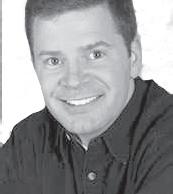
A Commentary on the Intersection of Faith, Sex and Culture
Living the Theology of Our
Bodies, Part I. In this column, the first of a three-part series, we’ll take a brief look at the “spousal” nature of prayer. In subsequent columns we’ll look at the Eucharist and Penance.
In my lectures across the nation on John Paul II’s “theology of the body” (TOB), people are often struck by the beauty of this vision for human life and, at the same time, by their own inability to carry it out.
Hence, one of the most frequently asked questions I hear is How do I live this?
This is the dilemma of anyone who encounters the teaching of Christ: we don’t have what it takes on our own to fulfill it. As John Paul II says, “Love and life according to the Gospel [are] beyond man’s abilities.
They are possible only as a result of a gift of God who heals, restores, and transforms the human heart by his grace.” Living the Gospel, then, is “a possibility opened to man exclusively by grace, by the gift of God, by his love” (Veritatis Splendor 23, 24).
In his TOB, John Paul gives us a 3-fold “program” for opening ourselves to this divine love, this grace: prayer, Eucharist, and Penance. These, he says, are the “infallible and indispensable” means for living the truth of love that God has inscribed in the theology of our bodies (see TOB 126:5).
At first, this might just sound like “standard Catholic stuff” that you’ve heard before. Sure enough, it is.
But John Paul II’s “spousal the-

ology” gives us a fresh, mystical perspective that you probably didn’t hear growing up in a Catholic school.
As the Catechism teaches, “The entire Christian life bears the mark of the spousal love of Christ and the Church” (CCC 1617).
Christians are called to live from within this “great mystery” of Christ’s spousal love (see Eph 5:31-31). This “vital and personal relationship with the living and true God... is prayer” (CCC 2558).
Prayer must never be reduced to a rote recitation of formulas. It’s
an invitation to deep intimacy with God. Prayer is where we “let our masks fall and turn our hearts back to the Lord who loves us, so as to hand ourselves over to him as an offering to be purified and transformed” (CCC 2711).
But John Paul II’s “spousal theology” gives us a fresh, mystical perspective that you probably didn’t hear growing up in a Catholic school.
We must allow ourselves to “get naked” before God. Masks and
Symbols and Communities: In times of trouble
Perth-based Scalabrinian Tony Paganoni CS has started a series of reflections on the significance of cathedrals in the life of a church and the wider community.
The link between a community’s religious heritage and its artistic expressions has been successfully explored.
The wide diversity revealed in the scene makes visual expressions
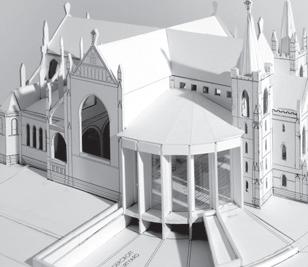
Spirit in Stone of Cathedrals and communities
Anthony Paganoni CS
a rich source of knowledge in the search for relevance and truth.
One clear case is the United States of America. Territories were colonised by different Christian traditions: Reformed Protestants, French and Spanish Catholics.
The Spaniards, who conquered and controlled the South West, represented a world whose spirit
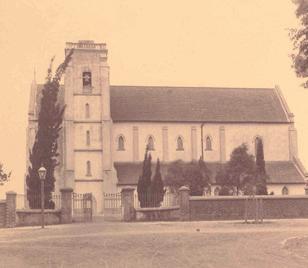
and cultural understanding came directly out of Spain and Mexico, then called New Spain. If the New England states represented a transplanting of much that was English, the South-West was Spanish at its core.
It revealed a brand of Catholicism, largely untouched by either the Renaissance or the Reformation. If
Protestants were unsure of the role of art in the Church, and if Roman Catholics in the rest of Europe felt it necessary to defend art and somehow purify it, Spanish Colonial Catholicism was not aware of such problems.
Art and images were part of daily domestic and liturgical life, powerfully expressing the forces that connected heaven and earth. To remove such images would have meant banishing the vivid embodiments by which God was known and made accessible.
Seeing and sensing were modes by which the benefits of God were daily known and appropriated. Christ, the Virgin Mary and a
plethora of Saints offered a visible network of available Grace. Their embodiment in painting, sculpture and buildings was a source of religious vitality. Images were more real than words.
Whereas the Protestants did not settle without Bibles and majored on extensive preaching, Spanish Catholics did not travel without the visual images of faith.
In Spanish settlements, the chapel or church, with multiple altarpieces covered with images of the saints and of Christ’s Passion, was at the centre of the community’s life.
Visible symbols were never out of sight. The Cross with its corpus and the saints answering specific
Vista 4 January 16 2008, The Record
fig leaves are the same thing – a way of hiding from God: “I was afraid, because I was naked, so I hid myself” (Gen 3:10). Prayer is where we allow Christ’s perfect love to cast out that fear (see 1 Jn 4:18).
Standing naked before the heavenly Bridegroom in prayer, Christ washes his bride (see Eph 5:27) so as to prepare her for “nuptial union.”
John Paul elaborates on this spousal vision of prayer in his document on the new millennium: “The great mystical tradition of the Church... shows how prayer can progress, as a genuine dialogue of love, to the point of rendering the person wholly possessed by the divine Beloved, vibrating at the Spirit’s touch, resting filially within the Father’s heart.”
He continues: “This is... a journey totally sustained by grace, which nonetheless demands an intense spiritual commitment and is no stranger to painful purifications (the ‘dark night’). But it leads, in various possible ways, to the ineffable joy experienced by the mystics as ‘nuptial union’” (Novo Millennio 33).
Here we see John Paul drawing from one of his favourite teachers, St John of the Cross.
According to this “Mystical Doctor,” prayer leads us to a surrender to God (and him to us) analogous to the surrender of spouses in sexual union.
St John writes, “Just as in the consummation of carnal marriage there are two in one flesh, ... so also when the spiritual marriage between God and the soul is consummated, there are two natures in one spirit and love” (Commentary on the Spiritual Canticle).
Only to the degree that we are “one in spirit and love” with Christ the Bridegroom are we able to love one another as he loved us.
It is an experience that comes to those who persevere in Christian prayer. Let us, then, not be afraid to persevere through the painful purifications that lead to us to “nuptial union” with God. Lord, teach us to pray!
Perspectives
Christmas causes suffering for lonely symbols help us
needs of the community distinguished human events and public spaces.
Another case in point is Australian Aboriginal art. No matter what we may believe about Aboriginal culture and way of life – and there are plenty of negative stereotypes in circulation, and not entirely without foundation – we would find it difficult to dispute the extraordinary renaissance of Aboriginal art in the last twenty or thirty years.
At a time when the tragic dislocation of Aboriginal life is under the eyes of practically everyone here in Australia and overseas, we have had an amazing recognition of

Edith Cowan University Journalism student Joanna Lawson has gone to India this summer to establish Branches, a project aimed at helping the exploited working poor in Goa. Her column appears regularly in The Record.
For many of us, Christmas is the time of the liturgical year we most enjoy, knowing full well that it is second to Easter in terms of significance in the story of redemption. However, the nativity with its endearing story of the travelling family, looking for a place to rest, Our Lady being tended to so lovingly by Saint Joseph and the subsequent birth of their son in a stable touches something in us like no other festival does. The Holy Family became complete at Christmas,
The Vine Branches
 By Joanna Lawson
By Joanna Lawson
but often it is this theme of unity that causes many people to suffer keenly, especially if their lives have seen loss or separation, especially in their own family. Bearing this in mind, I tagged along with my neighbour who runs a Christmas day ministry with his family.
It was a hot day on the 25th of December; even though it is supposed to be winter the thermometer was reaching the 38 degree mark with regularity. I walked into the house of Lazarus D’Souza as he dusted off a red felt cap and a fake white beard, he had already donned a pair of baggy red pants over his own trousers.
As usual, I was given the warmest welcome, and with the proximity of a festive hug noticed he had
already begun to sweat. “What to do? It’s hot, but they love to see Santa!” he laughed when I suggested he delay his full transformation into the man from Lapland.
Accompanied by his wife Josephine and daughter Bharati, we drove around the villages, and first went into the home for the aged in neighbouring Uccasaim, where we disturbed the folk from their afternoon sleep, They were glad to hear the singing, but it was the handshakes, kisses and the small amount of time spent listening to what they had done that day that really made their faces come alive with smiles.
One lady speculated that her son would arrive any time soon, but she mentioned he lived in Mumbai, and I feared that without even a phone call from him as yet, her hopes would see no fruit by the end of the day.
The same scenes played out in the next three homes we visited, and time and again I was shown how it seems to be a miracle that with such little time and effort so
much can be given. For me, who has a loving family, many friends and innumerable blessings, the ability to be used by God is almost limitless, and that sometimes makes me frightened, but mostly I feel spurred on to act.
There was not much I could do for the old people on Christmas day. I was not a doctor who could heal their gammy leg or restore their hearing. I was not someone from their own family to take them home for the celebration. But who knows what our presence at their home did for them. After a few hours Santa was fraying around the edges. It was so hot, he had begun to boil in his suit, yet he was happy to try and fit in one more person to fool around in front of to raise a chuckle.
Later on that day, we went home, back to our own families. I had not spent the bulk of the day with them like I had for every Christmas before this one. But it was one of the best yet.
Read Joanna’s Blog on the internet at: www.thebranchesproject.blogspot.com
contemporary Aboriginal art, ironically with the open sponsorship of the white culture which has been responsible for the oppression of Australian Aborigines for the last 200 years.
Many Aboriginal artists live in communities where traditional lifestyles have been disrupted and in circumstances of great material neglect.
And yet they are able to call upon the religious and artistic resources of their kinship group and their own Dreaming to produce canvases of great formal potency.
The question becomes unavoidable: where do these mysteriously powerful images come from?

January 16 2008, The Record Page 9
Indian Sister: Sr Rita and Sr Valeria who run the Bom Jesu home in Nachinola. They belong to the order Missionary Sisters of the Queen of the Apostles.
PHOTO: JOANNA LAWSON
God


The World
Love the Church, serve the Pope
The Jesuits met during the week to elect their new superior general and discuss the reasons for their decline. A top Vatican Cardinal told them what it expects from the order: more obedience to the Pope, and more fidelity to doctrine.
■ By Anthony Barich
Slovenian Cardinal Franc Rode has told the Jesuits’ 35th General Congregation in Rome to pray for God to grant them the grace to believe in and love the Catholic Church.
Cardinal Rode, the Vatican’s Prefect of Religious, said at the opening Mass of the General Congregation that the Church is counting on the Society of Jesus to play a role in restoring the sense of Church among Religious families.
The Cardinal said it was “with sadness and anxiety” that “I also see a growing distancing from the Hierarchy (of the Church)”, adding that “consecration to service to Christ cannot be separated from consecration to service of the Church”.
He reminded the Jesuits that their founder, St Ignatius of Loyola, and his companions spelled this out when they wrote the Formula of the Society’s Institute: “To serve the Lord and his Spouse the Church under the Roman Pontiff”.
“It is with sorrow and anxiety that I see that the sentire cum ecclesia
Briefly...
Marxist escapes to save her baby
(listen to the Church) of which your founder frequently spoke is diminishing even in some members of religious families,” the Cardinal said.
“The Church is waiting for a light, a light from you to restore the sensus Ecclesiae (sense of the Church).”
“The doctrinal diversity of those who at all levels, by vocation and mission are called to announce the Kingdom of truth and love, disorients the faithful and leads to a relativism without limits.
“The exegetes and theological scholars are involved in working together under the watchful care of the sacred teaching office of the Church, to an exploration and exposition of the divine writings.
“May those who have to oversee the doctrine of your magazines and publications do so in the light of and according to the rules for ‘sentire cum ecclesia,’ with love and respect.”
Of the last seven theologians scrutinised by the Congregation for the Doctrine of the Faith, four belong to the Society of Jesus: Jon Sobrino, Roger Haight, Jacques Dupuis, and Anthony De Mello.
In his resignation speech, outgoing Jesuit General Superior Fr PeterHans Kolvenbach said the Jesuits should be grateful to the Lord that “despite a disconcerting diversity of persons and cultures, of desires and works, our union in minds and hearts has never failed”.
He said that despite “an increasing fragility, the Society retains the capacity of apostolic dialogue before the challenges of the modern world in proclaiming the one Good News”.
Fr Kolvenbach presented his resignation to the General Congregation
on January 14 and its 225 delegates voted to accept it. The diplomatic Dutchman jokingly thanked the body for “the elegant way you have found to fire me” – though he had planned to retire all along, despite Jesuit General Superiors usually staying on for life.
He thanked the Holy Father, Pope Benedict XVI, for “his apostolic orientations which have allowed the Society to continue our mission ‘under the banner of the Cross and under the Vicar of Christ on earth’.”
Fr Kolvenbach’s top aide to Latin America, Fr Valentin Menendez, reminded his brethren at the General Congregation “of the difficult 1981 Pontifical intervention” when Pope John Paul II imposed a ‘personal delegate’ – Fr Paolo Dezza – as temporary vicar of the Order when Superior General Fr Pedro Arrupe was recovering from a severe stroke.
Fr Menendez also noted that Cardinal Rode’s blunt opening message to the General Conregation constituted the “thinking of the Church”.
On January 15 the delegates moved to the traditional four days of murmuratio (discussion amongst themselves) in preparation for Saturday’s election of the new “Black Pope”.
Pope Benedict XVI is due to hold an audience with the newly elected Superior General on February 21, together with the delegates who represent the almost 20,000 Jesuits around the world.
At the General Congregation the delegates discussed a report on the Society’s strengths and weaknesses and many questions concerning the identity and mission of the Jesuits in today’s world, including their vow of obedience to the Pope.
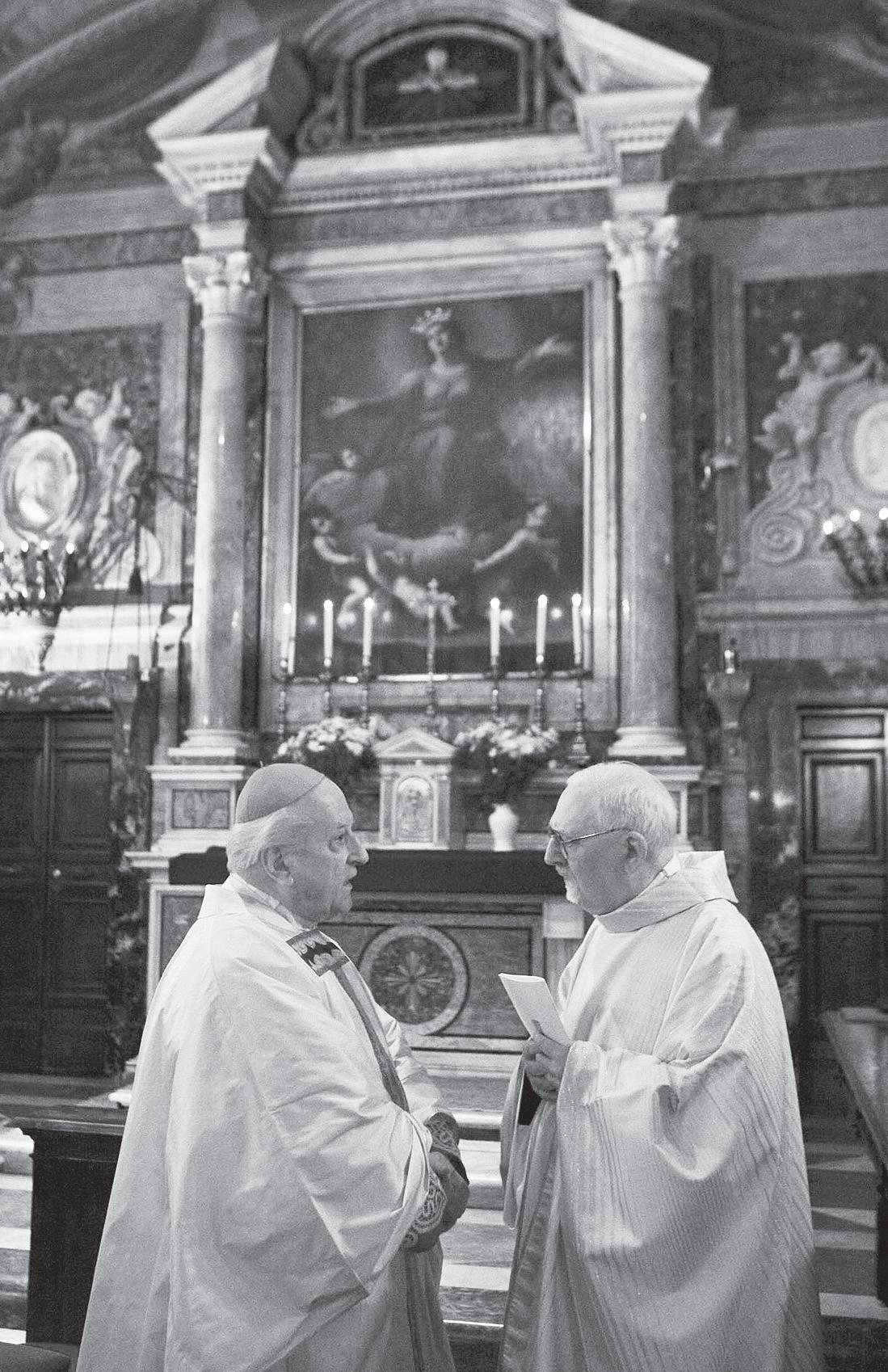
A 17-year-old member of the Marxist rebel group FARC who is three months pregnant has escaped from the organisation to avoid being forced to undergo an abortion and to save the life of her child. She revealed that forced abortions are a common practice in the rebel group. According to the Colombian daily “El Tiempo,” the young girl known as “Nicole” was forced by her commanders to drink solutions intended to provoke an abortion. She escaped on December 19 and turned herself in to government forces. “My comrades dropped me off in a home in the small town of Nazareno en Planadas, with a bunch of explosives, and since they warned me about the abortion, I took advantage of the moment and I fled,” she said. She was taken in by the Colombian Institute for Family Well-Being. Nicole joined the FARC when she was 10 years old—the Marxist group commonly recruits young girls for its ranks. According to doctors at the University Hospital of Neiva, Nicole will have a highrisk pregnancy. She is stable and the unborn child is healthy, but doctors have yet to determine if the baby was affected by the abortion solutions she was forced to drink.
Milingo denied Communion
At the start of a visit to Italy, excommunicated Archbishop Emmanuel Milingo was denied Communion when he attended a Mass at a local parish church near Naples.
The former Zambian archbishop and his wife, Maria Sung, attended an early evening Mass at a local church in Pompeii on January 10, one day after his arrival in Italy from South Korea. When the Archbishop approached the celebrant - Fr Francesco Soprano - he refused the Eucharist to the Archbishop, who then reportedly blessed the celebrant and lightly touched his head, according to Italian media reports. Archbishop Milingo, who was married in a Unification church ceremony in 2001, was excommunicated by the Vatican in 2006 for illicitly ordaining married men. While he is excommunicated, the archbishop cannot receive the Eucharist or any sacrament of the Church. The 77-year-old former Archbishop of Lusaka was to be in Italy from January 9-27 to promote a new book and meet with supporters of his US-based Married Priests Now! movement he founded in July 2006 which advocates that the Roman Catholic Church allow married priests in active ministry. Under church law, Latin-rite Catholic priests must remain unmarried and are bound to celibacy.
Missal re-translation gets the nod
VATICAN CITY (Zenit.org) - As a new English translation of the Roman Missal nears completion, translation experts and Vatican officials expressed their satisfaction with the achievement. In a press release from the Congregation for Divine Worship and the Sacraments, the progress of the Vox Clara Committee was explained. The committee, formed in 2001, is a panel of bishops who provide advice to the Holy See concerning English-language liturgical
books. The committee’s 15th meeting ended last month, and focused extensively on the Green Book draft translations of several Masses from the International Commission on English in the Liturgy (ICEL), which sends its proposed translation to bishops and experts for study and comment (Green Book). After the comments are incorporated, the texts are proposed for canonical vote by the episcopal conferences (Grey Book). The text, once approved by the bishops’ conference, is sent to Rome for approval (White Book). “Considerable time was also devoted to a careful review of the ICEL Gray Book for the Proper of Seasons in the light of those recommendations provided to the mixed commission by the congregation following Vox Clara’s review of the ICEL Green Book for this segment last year,” the communiqué added. “This review was conducted in preparation for the submission of White Book translations following the canonical approval of these texts by the English-language episcopal conferences in the coming months and the subsequent and concluding review by the congregation in preparation for the granting of the ‘recognitio.’” Other items of study during the Vox Clara meeting included the “confirmation of the Order of Mass, including the fine-tuning of several points of translation in the Eucharistic prayers.” The Vox Clara committee will meet again in September.
Taiwan asks Pope for help
Taiwan President Chen Shui-bian of Taiwan has asked Pope Benedict XVI to support his country’s bid to join the United Nations and to participate fully in otherinternational
forums. “Having long been persecuted by communist China, Taiwan has been excluded from taking part” in the United Nations, the World Health Organisation and other agencies designed to bring countries together to address the world’s problems, the president wrote.
The Taiwanese Embassy to the Holy See gave Catholic News Service a copy of Chen’s January 2 letter to Pope Benedict.
Chen said he fully agreed with the Pope’s assertion that humanity is a global family and that problems must be faced by all nations working in harmony. But because of China’s insistence that individual nations and international organisations not recognise Taiwan’s independence, “Taiwan has been unable to work hand in hand with the international community in seeking solutions to issues of mutual concern, especially to matters regarding the survival of mankind,” Chen said.
Taiwan has diplomatic relations with only two dozen countries; its Vatican embassy is its only diplomatic mission in Europe. While the Vatican continues to have full diplomatic relations with the country, it has not sent an ambassador to Taiwan in more than 30 years. The government of mainland China consistently says the Vatican must break diplomatic relations with Taiwan if it wants to improve relations with the Communist country. Vatican officials have said they are willing to move the embassy to Beijing as soon as China indicates it is serious about restoring diplomatic relations. Chen’s letter did not mention the official status of VaticanTaiwanese relations, but focused on Taiwan’s exclusion from international organisations.
Page 10 January 16 2008, The Record
Hear this: Cardinal Franc Rode, prefect of the Congregation for Institutes of Consecrated Life and Societies of Apostolic Life, talks with Father Peter-Hans Kolvenbach, superior general of the Jesuits, before the start of the opening Mass of the order’s 35th General Congregation at the Church of the Gesu in Rome on January 7. Jesuits are meeting to elect a new superior and discuss major issues the society is facing.
PHOTO: CNS/DON DOLL SJ




The World
Post-Vatican II schismatics return to the Church
Schismatics returning to Church after Summorum Pontificum
■ By Mary Shovlain
ROME (Zenit.org) - Six months after Benedict XVI issued an apostolic letter on the extended use of the 1962 missal, the Vatican says it is seeing fruits of reconciliation with Catholics who objected to the liturgical reforms of the Second Vatican Council.
“Summorum Pontificum,” allows for more availability of the Latinlanguage Mass, a rite the document dubs the “extraordinary form.” The letter, issued “motu proprio” (on his own initiative), brought attention to the situation of schismatic groups such as the Society of St Pius X, that refuse to celebrate the “Novus Ordo” Mass established by Vatican II.
Cardinal Darío Castrillón Hoyos told Zenit that after the June 7 document, one group has already asked to return to full communion with the Church.
Cardinal Castrillón Hoyos, as the president of the Pontifical Commission Ecclesiae Dei, is the Vatican official in charge of facilitating the return to full ecclesial communion of people linked to the Society of St Pius X, founded by Archbishop Marcel Lefebvre.
“We have already received responses [to the letter],” Cardinal Castrillón Hoyos said. “Here in Rome we have a community that has asked to return and we have already begun mediating their full return.”
Requests, he continued, are coming in from around the world: “Many of the faithful have contacted us, written and called, to say they want full communion.” Cardinal Castrillón Hoyos clarified the current status of members of the Society of St Pius X due to excommunications issued by the Vatican to group members in 1988, in the wake of the schismatic gesture by Lefebvre of ordaining four bishops illicitly. He explained: “The excommunications for the consecration done without the Pope’s permission affects only those bishops who carried out the consecration, and those bishops who received episcopal ordination in this illicit form in the Church, but it does not affect the priests or the faithful. Only those bishops are excommunicated.”
According to the Vatican prelate, what is needed now is “to sew back together the ecclesial fabric, because our brothers - I know them, I know some of the bishops even better - are all people of good will, people who want to be disciples of Jesus.”
“In this moment,” he continued, “with a little humility, with a little generosity, we can return to full communion, and the faithful want this because they do not want to participate in the rites when the priest is under suspension because the Church does not permit them to say Mass and absolve sins - so the faithful want this full return.”
Cardinal Castrillón Hoyos said he hoped that everyone involved will continue “to work with the Holy Father to sew back together this unity so that these good people can have the fullness of holiness that comes from union with the only Church of Christ, founded upon Peter and his Successors.”
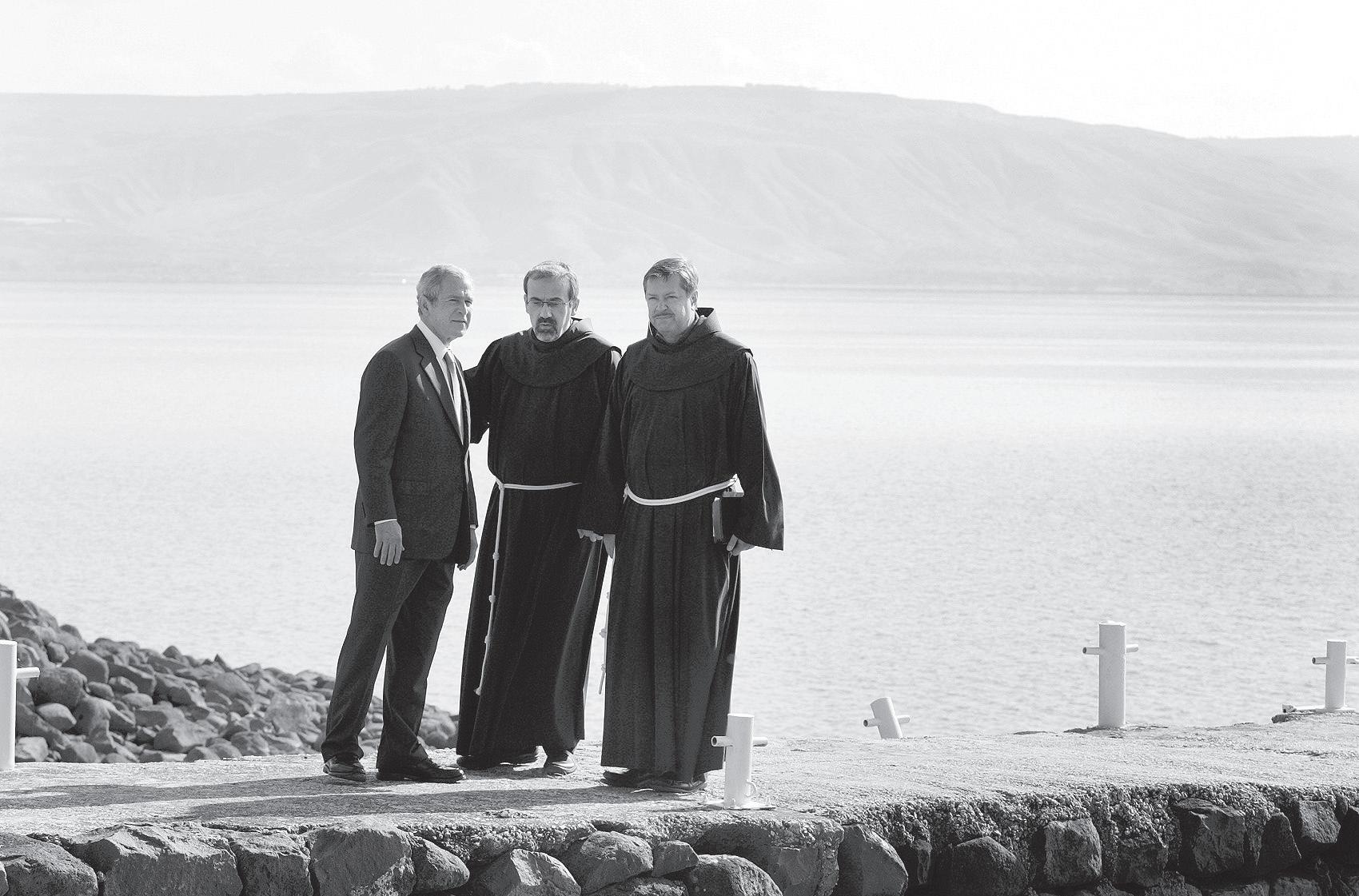
End checkpoints: Bush
JERUSALEM (CNS) - US President George W Bush told residents of the West Bank city of Bethlehem he hoped someday the creation of an independent Palestinian state would eliminate checkpoints and walls at the Israeli border.
“Someday I hope that, as a result of a formation of a Palestinian state, there won’t be walls and checkpoints, that people will be able to move freely in a democratic state,” Bush said on January 10 during his visit to the birthplace of Jesus.
“That’s the vision, greatly inspired by my belief that there is an Almighty, and a gift of that Almighty to each man, woman and child on the face of the earth is freedom. And I felt it strongly here today.”
Bethlehem residents have said a 25-foot (8m) wall surrounding the city has left them feeling imprisoned. Israel says the wall - part of a planned 400-mile (640km) cement and barbed-wire barrier through the West Bank - has proven its effectiveness against suicide bombers.
Bush thanked the residents of Bethlehem for “enduring a presidential trip,” and thanked the leadership of the three churches - Greek Orthodox, Armenian and Catholic - who share in the care of the Church of the Nativity for welcoming him.
After two days of meetings with Israeli and Palestinian leaders, Bush spent one-and-a-half hours in Bethlehem visiting the church. He was accompanied by Palestinian Tourism Minister Kholoud Daybis and church leaders of the three denominations that share authority over the Church.
Franciscan Fr Pierbattista Pizzaballa, who heads the Franciscan Custody of the Holy Land, was the Catholic representative. Bush called his visit to the church “a moving moment.”
“For those of us who practise the Christian faith, there’s really no more holy site than the place where our Saviour was born,” he said. “It’s a fascinating history in this church, so not only was my soul uplifted, my knowledge of history was enriched.”
As elsewhere during the president’s three-day visit to the Holy Land, security was high in Bethlehem. People living on the main road to Manger Square and near the Church of the Nativity were told to remain indoors. Shopkeepers near the square kept their shops closed.
In both Bethlehem and Ramallah, where the president met earlier with Palestinian President Mahmoud Abbas, American flags were not put up for fear they might be burned.
In Ramallah, police stopped a group of Palestinian protesters on their way to Abbas’ headquarters, where the two leaders met. No incidents were reported in Bethlehem.
“Bethlehem is calm, absolutely calm,” Father Marwan Dides of St. Catherine Church in Bethlehem told Catholic News Service in a phone interview.
Bush visited the Church of the Nativity, then went down to the grotto underneath where Christian tradition holds the Jesus was born, said Father Dides. He also spent time at the Franciscan-run St Catherine Church.
After his visit, Bush shook hands with some 15 Franciscan friars outside the church.
“He was very nice. We thought he would be more formal, but he was very simple,” said Father Dides, who was among those who greeted the president.
The priest said most of the Franciscans had not been allowed to leave their residence during the president’s visit.
Angry scientists protest Pope’s visit to Roman university
Pope “hostile to scientific progress”, charge academics
Vatican City (CWNews.com) - A group of Italian academics have protested plans for a visit by Pope Benedict XVI to a leading university in Rome, charging that the Pope should not be honoured in an academic setting because he has shown hostility toward scientific advance.
Some 67 professors signed a protest statement calling for cancellation of a visit by the Holy Father to La Sapienza university on January 17.
Led by Andrea Frova, a physics professor at La Sapienza, the protesters said it would be “inappropriate” for an institution committed to scientific progress to honour the Pope, arguing that the Church has worked to suppress science. To bolster their position, the 67 protesters cite a 1990 speech in which then-
Cardinal Ratzinger defended the Church’s disciplinary action against Galileo in 1633.
In that talk, the future Pope cited the verdict of the agnostic scholar Paul Feyerabend, who said: “The Church in the age of Galileo clung to reason more than Galileo himself did.” He found that the heresy verdict against Galileo was, by the standards of the times, “rational and just.”
Although he did not endorse Feyerabend’s conclusion - Pope John Paul II had already acknowledged that the Church erred in condemning Galileo - Cardinal Ratzinger did stress that the Church was not hostile to science, and in fact Galileo continued his investigations, with support from the hierarchy, even after his trial.
The thrust of Cardinal Ratzinger’s speech in 1990 was to show how the Enlightenment era had created an artificial rift between faith and reason. He argued that the Galileo trial, “which was little considered in the
18th century, was elevated to a myth of the Enlightenment in the century that followed.”
The protests against the Pope’s visit to La Sapienza have echoed that hostility toward religious faith, claiming that the Church today still suppresses scientific progress.
Ironically, to protest that alleged restraint on free inquiry, the group asked university officials to prevent a speech by the Roman Pontiff.
Vatican Radio, describing the protests as unworthy of academic life, questioned whether the professors were displaying the “tolerance” that they proclaimed.
The dean of the university has said that he will not cancel the Pope’s visit.
But protests at the school are planned throughout the week, with critics posting anti-clerical slogans around the campus and organising a “homo-cession” - a parade of homosexuals and lesbians - to protest Church teachings.

January 16 2008, The Record Page 11
Under fire: Pope Benedict XVI has been accused of being hostile to scientific progress by Italian academics. CNS
Franciscan presence: US President George W Bush walks with two Franciscan priests near the Sea of Galilee while visiting the archaeological remains at Capernaum, Israel, on January 11. PHOTO: CNS/LARRY DOWNING, REUTERS
■ By Hal Colebatch
“The McNorries, by the time my greatgrandfather bought this pile from them, had become proper Victorians. Ashamed of their ancestors’ habits. Dropping people into a hole and leaving them to die. After the McNorries became respectable the oubliette was seldom opened, by them or us. Anyway” - Peter Carswell laughed, a little uncomfortably - “It’s pretty well full.” He poured me a whiskey.
“An odd thing for you to grow up with,” I said. We were eating in the great hall in a sort of indoorcamp style while the interior and exterior renovations went on. The lip of the oubliette, with a great iron-bound sliding stone lid, was there in the centre of the room, and conversation had turned to it inevitably. “Especially knowing it’s full of skeletons.”
“I grew up taking it for granted,” he said. “As, I suppose, I grew up taking for granted the title our family bought. I don’t think my parents wanted me taking a morbid interest in either of them. They themselves were almost excessively mentally healthy.
“I wasn’t shown it until I was in my late teens,” he went on. “Father had the cover taken off. It was daylight - I guess he made sure of that, so as to minimise any chance of giving me the horrors - a summer day like today. There are bones, but you couldn’t see much. It didn’t seem very deep, but perhaps that was because it was nearly full. I’ll show you. Well, there are, or were, plenty of old cathedral and church crypts full of human bones. A couple were cleaned out in London recently so they could be used as shelters for the homeless or rock-concerts or something. So what? I forgot about it, more or less.
“Then when I was visiting Winchester Cathedral - to see Jane Austen’s grave as a matter of fact - I saw how the old crypt there had been cleaned out and cleaned up. It was rather disappointing, actually. I thought of it as a symbol of the blandness that’s taking over so much of life - at least Tewkesbury Abbey still has the bones of the Duke of Clarence in a glass box in the Clarence Vault. But by that time I was thinking of doing this place up into a hotel. Obviously, along with new kitchens and plumbing, and your landscaping, a very major interior clean-out and renovation was needed.”
He led me over. The heavy cover had already been moved partly aside. Below was a tangle of bones, a few still articulated. I stared at it for a few minutes. It was unpleasant, yet, after the first sight, not particularly interesting. I’d seen human bones before. They weren’t going to do anything. It was hard to know how to comment on such an exhibit. “They don’t seem to have had any clothes,” I said after a while.
“Oddly enough, great-grandfather said the same thing when he was shown it the first time. They were thrown in naked. The McNorries were thrifty folk: clothes and possessions could be used again. Given to servants, at least, I suppose. Don’t
Summer Reading Clean Up
forget how precious everything was in the Middle Ages, before factory production. Waste not, want not. But also, clothes would have filled it quicker. And naked, your death would probably have been a bit more horrible, lying cold on the sharp bones of those who had preceded you. Think about it.”
I didn’t really want to think about it. But I had no disagreement with his point that it would have to be cleaned up as a pretty essential first step in converting the castle for paying guests. No doubt they would enjoy its blood-thirsty and haunted reputation, but without too much realism. “I told you, didn’t I?” said Carswell, “I’m hoping to get Tony along for the opening.”
Despite the ghastly history of the place, I slept pretty well in my room. Stories of ghosts had revived with its re-occupation by Carswell’s
like this. Not to mention archaeologists or historians of one sort or another. Terrific advertising! But then I thought: ‘Don’t make a spectacle of these poor bones. They died about the most appalling death imaginable. Let them go quietly, in peace, and with as little indignity as possible.’ They’ll be cremated, and their ashes scattered on consecrated ground. I’m glad I was able to arrange that.”
“And the law’s happy?”
“Of course. They’re not interested in murders from the Middle Ages, however ghastly. The council had one look and gave a certificate for cremation without any trouble.”
(They would be reluctant to give Carswell any trouble, I thought, considering his almost feudal network of business and political connections). “British Heritage is more interested in promoting diversity

people, and the beginning of restoration, but no ghosts came tapping for me.
We all breakfasted together next morning. The place had been run down, but since its purchase it had never been entirely deserted by the familyindeed Carswell had used it quite often for entertaining City contacts even in its unrestored condition (I guessed that for some this would create a not-unattractive frisson of spookiness) and there was a good kitchen. Carswell had brought up some of his personal staff, including a cook and two of his security guards.
The local clergyman and a Catholic priest - I remembered the oubliette had been in use before the Reformation - arrived and said some sort of prayer standing at the edge of the terrible hole while we stood round with heads bowed, praying or at least looking respectful.
I had had a vague idea the Catholic Church opposed cremation but the priest told me it would probably be for the best in this case. There was, he reminded me, no supernatural significance to human dust. Then a couple of workmen, with masks, gloves up to their elbows and disinfectant sprays, began shovelling the bones into bags.
“I was tempted to have the media along,” Carswell said as the clergymen departed, “You can guess how they’d be all over something
be made rather more challenging. I was giving Carswell value for his money. There was a path to be laid through the ancient water-meadow and I had ideas for restoring the boat-house by the river. A hint of The Wind in the Willows, and Toad Hall for the guests? Rides in punts and rowing-boats like Mole and Ratty? But it would never do to Disneyfy it. Perhaps a hint of Tolkien’s Gladden Fields, where the evil ring had lain unguessed until Deagol came upon it. More willows to be planted along the banks, certainly.
Twenty-first Century Britain. What was it Tony had said, back in Cool Britannia, before his Prime Ministership had developed its first wobble? That Britain was no longer “living in the world of a hundred years ago, when guys wore bowler hats and umbrellas, all marching down Whitehall.” Post-modern. A lot of the recent news had been about the widespread but curiously anaemic celebrations of the 200th anniversary of the Battle of Trafalgar, with its politically-correct re-enactment between “Red” and “Blue” fleets, and an actor playing Nelson forced by regulations to wear a life-jacket when stepping into a boat on the calm waters of the Thames, though apparently some of the private celebrations had been livelier. A new Britain beyond history. Beyond, as far as I could see, even the political rivalries and divisions that had shaped it since the Act of Settlement. A strange new world where nothing of the past was assured, but where people like me might still find a place recreating some sanitised simulacrum of that past, for the sanitised present. There were worse things than pandering to nostalgia.
went into the bag. Carswell looked pleased, too. Indeed, with the bones gone, it was as if something which we had not previously noticed had been taken from the atmosphere indoors - auto-suggestion, of course.
True, I thought, the castle had lost something in terms of history and authentic colour, but on the whole it was a change for the better. And Carswell was right - those poor remains deserved dignified disposal.
The re-decoration was also progressing in the banqueting hall. The walls were to be steam-cleaned, new banners hung, new suits of armour positioned along with spears and stainless-steel battle-axes. The mouth of the oubliette itself, whether open or closed, would be the centre-piece, as it had been in the distant past. It would, of course, be thoroughly, industrially, cleaned and disinfected first. The underground hall below, through which its outer trunk passed like a great circular pillar, was to be a bar and disco.
With practically everyone busy at one thing and another, and trying to make the most of the long summer twilight (Carswell paid well for all his reputation as a hard man), we were serving ourselves with meals as we had time, and I found myself left alone while the others went off to get food. The oubliette was open and, of course, now empty.
I stood looking down into it for a moment. There were bright lights rigged, and still plenty of summer light. It was difficult to feel much more than a vague memory of menace or horror about it now. But curiosity. Like any of the tourists who would be coming soon, I descended the winding steps to the bottom, and tried to imagine ...
and the history of minority groups than Medieval Britain, thanks to political correctness, and these are British bones. No museum or university can actually compel me to turn the bones over to them for study - at least, not if I’m quick. How could they frame an injunction or a preservation order? Especially if I give them no time.”
The workmen’s heads sank out of sight in the oubliette as they shovelled the bones out from around their feet. There were steps winding down the inside wall (for a silly moment I had wondered how they would get out when they had emptied it). I watched for a while, trying to count the skulls as they were bagged, but eventually felt a kind of mental or aesthetic indigestion with the business, and a kind of embarrassment. They had brought up and stacked quite a row of bags by the time I left.
I was glad to get out into the open with the breeze and birdsong and see my own landscaping designs taking shape. Looking back at the Castle, half-covered in scaffolding where stone-masons, painters and cleaners were busy, I thought how pleasant it might look when restoration was complete. There would have to be ivy, of course, lots of ivy, and, it suddenly occurred to me, some beds of tea-roses on the terraces. I made a mental note to tell Carswell about that. The old maze was to be re-planted and, I thought again, looking at my plans, would
Iwas called away by Wilson: the trench I had planned for the avenue of fruit trees had run into an old pipe. We worked out that it must supply the great ornamental fountain. That was still working, and probably dated from Edwardian times. The pipe was still pretty solid-looking but it was lucky that a back-hoe blade hadn’t gone into it. There was also some dressed stone uncovered, which looked disturbingly like something archaeological. There was, unpleasantly unmistakable, tessellation exposed in the dark soil. We didn’t want work stopped by a preservation order now, and ancient buildings could attract one more easily than dusty bones. I called Carswell out of the castle, and after some discussion we decided to cover it up again. I quietened my conscience by marking it on a map. Let it lie there for the future, perhaps to be explored later in a non-intrusive way by ground-penetrating radar or other modern techniques.
Anyway, by the time we got back to the castle the oubliette was cleared out. The last of the bags of bones were stacked in the back of an unmarked white van and driven off to the local crematorium. The workmen, shedding their masks, looked tired and, understandably, glad the job was done. I guessed they had a good bonus and I guessed they had quitted the oubliette with relief and without looking back as soon as the last shovel-load
My fingers touched holes in the walls - rat-runs. That gave me a shiver. They had been put there for a purpose: rats would have stripped flesh from bones and helped the mass of them settle down quicker, as well as being an added horror for the still-living victims. Any lingering doubts I had had about the clean-out vanished. Carswell was right to have everything burned, to leave nothing of his predecessors’ horrors. I suddenly felt that, history or no, the whole ghastly thing should be removed. There was something to be said for post-modern Britain, even if it had lost some colour. When actually down here, I noticed now, there was still a nasty smell, combined with the castlesmell of ancient stone. I looked up at the light a man’s height and more above my head, trying to imagine. I looked down at my feet.
The floor was somewhat concave, and there was a pool of small stuff left with the coarse pale dust (dust that might have once been the tiny bones in knees and elbows) in the bottom, fragments that had sifted down and missed the last shovelling-up.
Rats’ bones, human vertebrae, metacarpals and metatarsals, a round bullet some unfortunate might have carried in his body, a few bean-like and gravel-like gallstones or kidney-stones, and small things overlooked when victims had been stripped and thrown in - rings, tooth-fillings, the battery of a cardiac pace-maker.
Page 12 January 16 2008, The Record
REVIEWS
Little books offer light in divorce’s dark
Catholics Experiencing Divorce
By Vicki Wells Bedard and William Rabior
Published by Liguori
$9.95 + postage
Prayers for Catholics
Experiencing Divorce
$11.95 + postage
Available from The Record
■ Reviewed by Mark Reidy

This book does not take a moralising stance on the issues raised by divorce, but addresses the subject from the perspective of those who have already made the decision. Both Bedard, with firsthand understanding of divorce, and Rabior, an experienced social worker, are aware of
the emotional and spiritual trials associated with the decision and have opted to concentrate their efforts on the journey of healing that is necessary but, they state, does not necessarily always follow.
This concise 69-page book interweaves personal testimonies with practical advice on how to cope with grief and other powerful emotions and its progressive format assists the reader in identifying their own stage of healing and responding accordingly.
The authors are firm in their belief that the level of hurt experienced and subsequent healing required is unique to each individual, but they have found that wrestling with the questions of “Who was I?” “Who am I?” and “Who will I be?” are common to most people.
It is important, they write, that one finds their fundamental identity in their relationship with God and that prayer be the avenue in rediscovering oneself in the aftermath of separation.
But they are well balanced in their approach and are adamant that the process of healing must incorporate areas such as individual, group or specialised therapy if appropriate.
The book attempts to clarify issues surrounding the annulment process, receiving Church Sacraments as well as addressing common misconceptions of Church teaching and has been given an
Imprimatur by the Auxiliary Bishop of St Louis, Most Reverend Robert J Hermann.
Its final chapter, From Darkness to New Life, addresses the issue of forming new relationships, but emphasises that this is often rushed into and consequently can lead to further pain. Reconciling with God and healing oneself, they suggest, must be achieved before considering any future options.
Not having had any firsthand experience of divorce, but knowing a number of people who have lived through or are going through the process, I found this book evoked a sense of both enlightenment and discomfort.
It not only gave me an insight into the feelings of hurt, abandonment, grief, anger and guilt that can

be experienced by those who have lived through the tribulations of divorce but it also revealed my own
ignorance and inhibitions when interacting with these people. It is a book that many going through the journey of divorce will identify with and it will offer them great hope, but I believe it will also benefit anyone who knows someone going through the painful process.
Divorce is a subject that many Catholics feel awkward about. However, books such as this will provide a greater understanding and inspire a deeper compassion toward those who find or have found themselves in this situation.
Meanwhile, the second book of forty-four prayers also published by Liguori is a companion to “Catholics Experiencing Divorce” and is designed to mirror the journey of healing that is mapped out in that book.
The prayers are written from a personal perspective, expressing the raw pain of initial separation and loss and addressing the reality of emotions that can be experienced.
They progressively reflect the path toward new life and new hope, which the authors acknowledge are different for each person. The reader is able to focus on the prayers that are most relevant to their particular stage of healing and evolve accordingly.
Reading like contemporary psalms, the prayers are designed to assist readers in expressing their heartfelt cries to God as they bring Him their fears and hopes.
They will help those experiencing divorce to recognise the presence of God in their personal journey as they rediscover themselves and their self-worth. They can also guide those who pray them in identifying even the most elusive thoughts and feelings and lead them more deeply into the understanding of a loving and merciful God.
Support available in Perth
The Beginning Experience describes itself as “A weekend away for a lifetime of change”. Its vision is that widowed, separated and divorced people will work through their grief, be healed, transformed and become free to love again.
A Catholic initiative that began in the US in 1974, it is open to people of all faiths. There are now 150 centres operating throughout the world, including Perth.
The weekend is not a counselling experience but is about acknowledging and expressing personal feelings in a safe and intimate environment with others who are in a similar situation and is guided by facilitators who have also suffered marriage losses.
It is designed to assist people with their feelings of anguish, loss, guilt and anger and give them hope for the future.
The next Beginning Experience weekend in Perth is on March 7-9. For further information or bookings contact Bev on (08) 9332 7971.
In a year of cinematic bleakness, Juno stands out
Directed
by Jason Reitman
96 minutes. Starring Ellen Page, Michael Cera
Juno is witty, intelligent and spunky. Its director, Jason Reitman, manages to bring off his second film with originality and charm.
The lead actress, Ellen Page, will likely be nominated for an Academy Award - an impressive feat considering her age and slim acting resume. But the best feature of Juno is that it examines the controversial topic of teen pregnancy and builds a secular case for the sanctity of human life.
In the highly charged political atmosphere of the Seventies, movies tended towards a pro-choice slant. Thirty years later, if this film is any indication, things are changing. Sixteen-year-old Juno MacGuff (Page) finds herself pregnant after a casual romp with her best friend, Paulie Bleeker (played by the everawkward Michael Cera). Like so many in similar situations, Juno’s knee-jerk reaction is to get an abortion, and her girlfriend casually offers to help set up an appointment, mentioning it wasn’t the first time she would help a friend get out of the same hot water.
When Juno arrives at the clinic, she runs into Su-Chin (Valerie Tian), a pro-life classmate picketing in the parking lot. Her appeals to Juno fall on deaf ears until she calls out in desperation, “your child probably has fingernails, you know!”
The impact of Su-Chin’s statement resonates with Juno. Realising that

the life growing inside her may be more than just a crimp in her plans to hang out at the mall, she resolves to carry the baby to term before giving it up for adoption. Let the pregnant hijinks begin.
In her quest to find an ideal, loving family, Juno settles on Mark (Jason Bateman) and Vanessa (Jennifer Garner). Good-looking, affluent, and apparently very much in love, they are the kind of couple that makes single people jealous – the perfect home for Juno’s child.
Of course, life is not always what it seems. Six months into the pregnancy, Mark reveals that he is divorcing Vanessa because he does not feel ready to be a father. He would rather work on his musical career without being burdened by
family life. With a broken home seeming inevitable, Juno is faced with the decision of keeping the child – fingernails and all – or finally getting the abortion.
The hardest pill for Juno to swallow throughout the entire film is not her pregnancy, but that the perfect family for her unborn child does not exist. The turning point comes when Juno accepts the reality that a broken home is better than none at all, and ultimately decides to give her child to the now singleparent, Vanessa.
Juno is not your typical teenager. She speaks in Eighties pop culture references, has wisdom beyond her tender years, and seems almost entirely unaffected by nine months of back pain, morning sickness, and
social ostracism from her less than compassionate classmates. While many critics may be sceptical of her extraordinary nonchalance, Page’s portrayal is thoroughly believable.
Despite the juvenile lack of romantic judgment, Juno displays a surprising amount of responsibility after the fact. Juno’s father (J.K. Simmons) and stepmother (Allison Janney) are relatively relaxed about the whole ordeal - which may have prompted their daughter to keep the child in the first place.
Mark represents the me-first generation. There are some delicious lines in Knocked Up, another surprise hit comedy of 2007 about an unplanned pregnancy, which sum him up. They are too good to omit here. During a dinner conversation, the husband tells his wife that children ruin guys’ plans.
“Like what? You already do everything you want to,” she replies.
“Yes, but what if I wanted to move to India for a year?”
“Do you want to move to India for a year?”
“Well, no, but I couldn’t if I did!”
On the other hand, Paulie’s forthright attitude is an excellent counterpoint to Mark’s flighty disposition. He demonstrates heroism in his willingness to support Juno throughout her pregnancy. Both Paulie and Mark fantasise about rock stardom, but only Paulie is willing to sacrifice his pipe dreams for the greater good. In an ironic twist, Juno demonstrates that age does not necessarily bring maturity.
According to the American Department of Health, there were
an estimated 1.3 million abortions in the United States in 2005. In some circles, abortion has become so culturally ingrained that it is no longer viewed as an option but an obligation for teen mothers. This makes it all the more surprising that Juno, a story about a girl who chooses life for her baby, has been a hit with critics. Even if the film fails to contest the legality of abortion, it makes it clear that the life of an unborn child is not so trivial an issue as the media would have you believe. Juno is rated PG-13 for some rough language and mature themes of casual sex. Nonetheless, this is a refreshing movie to watch with a teenager to help tackle awkward issues, or perhaps as an example for parents to demonstrate how they should support young adults who find themselves in similar situations.
It manages to look past the inevitable hardships of teen pregnancy by recognising the joy that comes with creating life. Despite her age, the lead character is intelligent enough to understand that sometimes doing what everyone else thinks you should do is not necessarily doing what is right.
In a year which has featured many bleak films, Juno is refreshing: a character-driven story about heroism and selflessness during times of struggle and trial. Its characters make mistakes, but they redeem themselves. They remind us that even if we aren’t perfect, we shouldn’t stop trying to get there.
- Mercatornet David Demers. the reviewer, is a student at the University of Ottawa.
January 16 2008, The Record Page 13
Life affirming: Jennifer Garner, Jason Bateman and Ellen Page star in a scene from the movie “Juno.” Some material may be inappropriate for children under 13.
PHOTO: CNS PHOTO/FOX SEARCHLIGHT
PANORAMA a roundup of events in the archdiocese
Panoramas
Panorama entries must be in by 5pm Monday. Contributions may be faxed to 9227 7087, emailed to administration@therecord.com.au or mailed to PO box 75, Leederville, WA 6902.
Submissions over 55 words will be edited. Inclusion is limited to 4 weeks. Events charging over $10 constitute a classified event, and will be charged accordingly. The Record reserves the right to decline or modify any advertisment. Please do not re-submit Panoramas once they are in print.
January 17 to 21
ARISE CONGRESS
A Trumpet Call for a Joshua Generation - John 23rd College, John 23rd Ave, Claremont. Speakers: Archbishop Hickey, Derek Williams, Scott Kaldahl, Eddie Russell and David Harp. 7.30pm EACH
EVENING Thursday January 17 to 20. ALL the evening sessions FREE entry. A Love Offering will be received each night to cover costs. Daytime Sessions Saturday and Sunday Registrations
Only. Saturday Jan 19 - 10am-12 noon - 2.30pm4.30pm. Sunday Jan 20 - 9am MASS (Free) - 11am - 2pm-4.30pm. Enq: FMI 08 9382 3668 Email: Arise@flameministries.org Web Info: www.flameministries.org/joshua-arise.htm.
Wednesday January 23
CARITAS AUSTRALIA PROJECT COMPASSION 2008
PARISH REPRESENTATIVES COMMISSIONING AND INFORMATION SEMINAR
Morning 9.30am – 11.30am OR Evening 6.30pm – 8.30pm, Catholic Pastoral Centre Seminar Room, 40A Mary St Highgate (Parking off Harold St), light refreshments provided.
Wednesday January 23
SIC NEW NORCIA/MARIST ANNUAL MASS AND REUNION
Venue: Newman College, Empire Ave, Churchlands. Mass will be celebrated by Marist old boy Priests at 5.15pm in the Newman College Chapel. This annual event will follow in the college courtyard. BYO everything! (BBQ’s available). SIC and Marist old boys most welcome. Please spread the word! Enq: Ambrose Depiazzi 9387 1117 or 0419 912 187.
Friday January 25
MEDJUGORJE EVENING OF PRAYER
An Evening of Prayer with Our Lady Queen of Peace at St Bernadette’s Church, Glendalough. Commencing 7pm. With Adoration, Meditation and Rosary, followed by Holy Mass. Concluding 9.30pm. Celebrant Fr Tiziano Bogoni. Enq: 9341 8082.
Saturday January 26
NOVENA DEVOTIONS EMBLETON
Our Lady of Good Health, Vailankanni will be held at the Holy Trinity Church, Embleton, starting at 5pm followed by the Vigil Mass at 6pm. All are welcome. Enq: Monsignor P McCrann 9271 5528 or George Jacob 9272 1379.
Sunday January 27
HOLY HOUR FOR VOCATIONS TO THE PRIESTHOOD AND RELIGIOUS LIFE
Holy Hour for Vocations held on the 4th Sunday of every month 2-3pm Morley Parish Church, 47 Wellington Rd, Morley. Includes Exposition of the Blessed Sacrament. All Welcome. Enq: 9276 8500
Wednesday January 30
CARITAS AUSTRALIA PROJECT COMPASSION
Lenten Speakers Workshop
Evening 6pm – 8pm, Catholic Pastoral Centre Seminar Room, 40A Mary St Highgate (Parking off Harold St), no charge, light refreshments provided, RSVP Essential 9422 7925.
First Friday February 1
ALLIANCE AND TRIUMPH OF THE TWO HEARTS
Holy Mass and Eucharistic vigil at St Bernadette’s Church Glendalough. Confessions at 5.15pm. Parish Mass at 5.45pm (Celebrant: Fr Doug Harris) followed by exposition of the Blessed Sacrament, hourly Rosaries, hymns and reflections etc. Vigil concludes with midnight Mass in honour of the BVM (Celebrant: Fr Francisco Mascarenhas). Enq: Fr Doug Harris 9444 6131 or Dorothy 9342 5845.
Saturday February 2
DAY WITH MARY
St Peter the Apostle Church, 91 Wood Street, Inglewood (Bedford), 9am to 5pm. A video on Fatima will be shown at 9am. A day of prayer and instruction based upon the messages of Fatima. Includes Sacrament of Penance, Holy Mass, Eucharistic Adoration, Sermons, Rosaries, Procession of the Blessed Sacrament and Stations of the Cross. Please BYO lunch. Enq: Franciscan Sisters of the Immaculate 9250 8286.
Saturday February 2
HOLY TRINITY CHURCH, EMBLETON
Novena to Our Lady of Lourdes commences. Starting at 6pm Vigil Mass followed by Novena devotions, Benediction, hoisting of the Banner of Our Lady of Lourdes. Welcome get-together for Father Hugh Thomas CSsR the Preacher. Please bring a Plate. February 3rd and 4th, blessing of children and anointing of the sick respectively.
Monday February 11, Feast Day. 7pm Holy Mass followed by candle light procession to the Grotto. After the closing ceremony there will be a farewell get together for Father Hugh Thomas. Please bring a Plate. Enq: Mgr P McCrann 9271 5528 or George Jacob 9272 1379.
Sunday February 3
CARITAS AUSTRALIA
Official Launch of Project Compassion
11am Mass, St Joachim’s Pro-Cathedral, corner Shepperton Road and Harper Street Victoria Park, Celebrant: Archbishop Barry James Hickey, Parishes to conduct local launch.
Sunday February 3
DIVINE MERCY
An afternoon with Jesus and Mary will be held at St Joachim’s Church, on the corner of Shepperton Road and Harper Street in Victoria Park, at 1.30pm. Program: Holy Rosary and Reconciliation, Sermon ‘The Precious Blood of Jesus’ by Fr Tiziani Bogoni followed by Divine Mercy prayers and Benediction. Afterwards refreshments in the parish hall followed by a video/DVD Fr John Corapi ‘Addictions”. Enq: John 9457 7771 or Linda 9275 6608.
Monday February 4
HEALING FIRE BURNING LOVE MINISTRY
BIBLE STUDY – Discover the Power of God’s Love in His Word. Every Monday commencing 4 February.
Daytime: 10am – 12noon, Evening: 7.30pm – 9.30pm. St Gerard Majella, ‘The White House,’ 36 Changton Way, Westminister. Enq: Jenni Young 9445 1028 or 0404 389 679
Tuesday February 5
CARITAS AUSTRALIA
Shrove Tuesday - Pancake Lunch
12 noon – 1.30pm, Cost: Gold coin donation, Catholic Pastoral Centre Seminar Room, 40A Mary St Highgate (Parking off Harold St), RSVP Essential 94227925
Saturday February 9
WYD SWAN VALLEY WINE TOUR
The Morley Leederville World Youth Day delegation have organised a Swan Valley wine tour. Tickets are $65 with transport to and from the Swan Valley, several courses of wine tasting, chocolate tasting and a set lunch included in the ticket price. This is a great opportunity to get to know some of the other members of the Perth diocese and represents fantastic value with similar private tours costing up to $130. Tickets can be reserved through the Infant Jesus Parish Morley on 08 9276 8500.
Sunday February 10
ST CATHERIN E‚S G INGIN
FEAST OF OUR LADY OF LOURDES 150TH ANNIVERSARY
(A Plenary Indulgence can be gained on this day)
Program: 12noon BYO lunch, 1pm Holy Rosary, Exposition, Hymns, Benediction and Blessing of the sick, 1.30pm Marian Procession. 2.30pm Holy Mass at the Grotto. 3.30pm Afternoon Tea provided. To book a seat on the coach, phone Francis William 9459 3873 or 0404 893 877. Enq: Sheila 9575 4023 or Father Paul 9571 1839.
PERPETUAL ADORATION OF THE BLESSED SACRAMENT
Is in its fifth year at Christ the King Church, Lefroy Road, Beaconsfield. 24 hours per day, except at Mass times. All are invited to spend an hour with Jesus truly present. Entrance is from the porch, near the altar on the Lefroy Road side of the church. Enq: Joe 9319 1169.
First Sunday of Every Month
HEALING FIRE BURNING LOVE MINISTRY
Celebrates the Sunday Mass at St Bernadette’s Church, Cnr Jugan and Leeder Streets, Glendalough commencing with praise and worship at 6.30pm
and Mass at 7pm. We have healing prayers after the Mass so please invite all those in need of the healing love and power of Jesus. Enq: Jenni Young 9445 1028 or 0404 389 679.
Every First Friday of the Month
NOVENA
Mass 7.30pm honouring St Pio of Pietrlcina with his Novena to the Sacred Heart and Prayer of Union. St Joseph’s Parish, 20 Hamilton Street, Bassendean. Join in every First Friday.
Third Sunday of the Month
OBLATES OF ST BENEDICT MEET
Venue: St Josephs Convent, York Street, South Perth at 2pm. An annual Retreat is held at New Norcia, Trinity Sunday Weekend. Oblates are affiliated with Benedictine Abbey New Norcia. We celebrate our 50th Anniversary September 2008. A golden celebration. All welcome. Vespers and afternoon tea conclude monthly meeting. Enq: Secretary 9388 3026.
Every Tuesday WEEKLY PRAYER MARY’S COMPANION WAYFARERS OF JESUS THE WAY
Starting at 7pm at St Mary’s Cathedral Parish Centre, 450 Hay Street, Perth. Appreciate the heritage of the Faith united with others asking Jesus and Mary to overcome burdens in life. Receive healing in prayer through the Rosary, Scripture, meditation and praise in song. Followed by friendship and refreshments. Prayer is powerful. Come join us!
First Friday and first Saturday of each month
COMMUNION OF REPARATION ALL NIGHT VIGIL
Corpus Christi Church, Mosman Park 7pm-1am, 46 Lochee Rd, Mosman Park. Mass, Rosary, Prayers, Confessions and silent adoration. Contact: Catalina 0439 931 151.
First Sunday of each month
DEVOTIONS IN HONOUR OF THE DIVINE MERCY
The Santa Clara Parish community welcomes anyone from surrounding parishes and beyond to Santa Clara Church, cnr of Coolgardie and Pollack Sts, Bentley. The afternoon commences with the 3 o’clock prayers, followed by the Divine Mercy Chaplet, reflection and concludes with Benediction.
Every Saturday PERPETUAL HELP DEVOTIONS
4.30pm. The half hour perpetual novena devotions to the Mother of Perpetual Help continue each Saturday at the Redemptorist Monastery Church, 190 Vincent St, in North Perth. Reconciliation available before and after the devotions. All welcome.
Every Sunday
BULLSBROOK SHRINE
Sunday pilgrim Mass is celebrated with Holy Rosary and Benediction of the Blessed Sacrament 2pm at the Shrine of the Virgin of the Revelation, 36 Chittering Road, Bullsbrook. Reconciliation is available in Italian and English before every celebration. Enq: 9447 3292.
BOOK DONATIONS WANTED
We are seeking donations of Catholic books, Bibles, Missals and Divine Office books any age, any condition. Tel: 9293 3092.
Every First Friday HOLY HOUR FOR VOCATIONS TO THE PRIESTHOOD AND THE RELIGIOUS LIFE
At Little Sisters of the Poor Chapel, 2 Rawlins Street, Glendalough. 7pm Mass with celebrant Fr Albert Saminedi. 7.30pm Holy Hour Adoration with Fr Don Kettle. Refreshments to follow in the hall. All welcome.
Second Friday of each Month
GENERAL PRAYER ASSEMBLY
The Couples for Christ and its Family Ministries welcome all members who now reside or are visiting Perth to join the community in our monthly general prayer assembly 7.30pm, St Joachim Parish Hall, Shepperton Road, Victoria Park. Enquiries: Tony and Dolly Haber (08) 9440 4540.
Every Fourth Sunday
SECULAR FRANCISCAN ORDER
The Perth Fraternity of the Secular Franciscan Order assembles every fourth Sunday at 2.30pm in
the Chapel of RSL Care, 51 Alexander Dr, Menora. Enquiries John 9385 5649.
Every Fourth Sunday
WATCH AND PRAY
A Holy Hour is held at Infant Jesus Parish, Morley from 2-3pm with exposition of the Blessed Sacrament. The hour consists of some prayers and Scripture but mostly the hour is silent prayer for Vocations. All are welcome. Please encourage others to come and pray. Prayer - it works! Enq: 9276 8500.
CALL FOR VOLUNTEERS
Ignatian Volunteers Australia calls for part-time volunteers to respond to the needs of people in the community who live in marginalised circumstances. At the heart of this program is a reflective process based on Gospel values, which supports the volunteers in their work. To learn more: www.volunteers.jesuit.org.au Contact Kevin Wringe, Perth Coordinator (08) 9316 3469 kwringe@iinet.net.au .
Every First and Third Monday of the Month
ST TERESIAN PRAYER GROUP
The St Teresian Prayer Group meets every 1st and 3rd Monday of the Month, 7pm at Infant Jesus, Morley. Enq: Darren Miranda 9276 6358 after 1pm.
Every Third Saturday of the Month
PRAYER FOR LIFE
Father Jim Shelton leads prayers from 10am to 11am at Abortion Clinic in Rivervale. All welcome. Enq 9279 1549 or 9403 2444.
Every Tuesday
THE GOSPEL OF ST MATTHEW
Exciting revelations into the Gospel of St Matthew are being offered in a free of charge Bible course being conducted by Fr Douglas Leslie Rowe SFP at St Joachim’s Parish Hall, Shepperton Rd, Victoria Park. Participants will be introduced into an insightful exploration of this fascinating Gospel. The course will be held every Tuesday at 7.30pm. Light refreshments will follow. Please bring a friend.
Every Sunday
N.O.W NIGHT OF WORSHIP
On the initiative of Fr Charles Waddell PP and the assistance of Flame Ministries International, a new and exciting service called “N.O.W” (Night of Worship) has begun at 7.15pm followed by Mass at 8pm every Sunday at St Thomas the Apostle Church corner of College Rd and Melville St, Claremont.
ETERNAL WORD TELEVISION NETWORK
Every Sunday, 1 - 2 pm on Access 31
Sunday January 13:
Spiritual journey of Fr Eric Bergman, former Episcopal minister, who brought most of his congregation into the Church / with Marcus Grodi [The Journey Home]
This is of special interest in view of large numbers of Anglicans seeking to join the Catholic Church.
We need more members if we are to keep going throughout 2008. Please send donations to keep EWTN on Access 31
The Rosary Christian Tutorial Association, PO Box 1270, Booragoon 6954
Enquiries: 9330 2467
Page 14 January 16 2008, The Record
3 bdrm, 2 bath. Phn 9381 3495 or email: valma7@bigpond.com.
BLINDS
■ BLINDS SPECIALIST Call AARON for FREE quotes 0402 979 889.
BOOK REPAIRS
■ REPAIR YOUR LITURGICAL BOOKS
Leather restorations; 2ndhand Catholic books @ Tydewi Bindery: phn 9293 3092.
BUILDING TRADES
■ BRICK REPOINTING
Phone Nigel 9242 2952.
■ PERROTT PAINTING PTY LTD
For all your residential, commercial painting requirements. Phone Tom Perrott 9444 1200.
In Brief...
Do boys have to be disorganised?
Boys who cannot get their school notes organised or their assignments handed in on time are becoming a market for a new brand of educational entrepreneur. High-priced tutors and college counsellors in the United States are charging as much as $100 an hour to teach teenagers how to get organised. Senior high school students doing college applications are a significant part of the market.
Boys seem to have the most trouble in filing papers and managing their time. A San Francisco consultant who set up shop six years ago requires her clients to have a three-ring loose-leaf binder for each academic subject, to divide each binder into five sectionsnotes, homework, handouts, tests and quizzes, and blank paper - and to punch and file every piece of school-related paper. Students must maintain a daily planner, number the order in which they want to do each day’s homework and tick it off, and do homework in a two-hour block in a quiet room with absolutely no distractions: no instant messaging, no Internet, no music,
BUILDING TRADES
■ PICASSO PAINTING
Top service. Phone 0419 915 836, fax 9345 0505.
FURNITURE REMOVAL
■ ALL AREAS
Mike Murphy 0416 226 434.
GIFTS
Shop 108 Trinity Arcade (Terrace Level) Hay Street, Perth. Ph 9322 4520. Convenient city location for a good selction of cards, candles, medals, apparel and gifts for baptism, reconciliation, communion, confirmation and weddings. We also stock a range of Monastique skin care product made by the Carmelite Sisters, fashion accessories, jewellery, handbags and Australian made gifts.
Opening hours 8.30-5.30 Monday – Thursday and 8.30-7pm on Fridays.
HEALTH
■ DEMENTIA REMISSION
Do you, or your loved one, suffer Dementia. Get into Dementia Remission like me! http://www.wgrey.com. au/dm/index.htm or (02) 9971 8093
no cellphone, no television. Clearly these kids have parents, because they are footing the bill, but what else are they doing? One exasperated teacher wrote to the New York Times: “Is there no limit to the price privileged parents will pay to subcontract the rearing of their own children? Parents … I implore you, treat Junior as you would a girl. Teach him to pick up after himself, and when school begins, to take responsibility for ordering the artefacts of his education.”
Another correspondent suggests that boys are struggling more than girls not only because of the way school is structured but because of the decline of team sports and other organised activities, Boy Scouts and compulsory military service.
FAMILYEDGE
‘Little Emperors’ create need for values course
Concerns in China that children of the newly-rich business elite lack good values and social graces have led to new philosophy courses being offered. “In China, if you are only rich, people will not respect you. You also need good manners, an outgoing personality and good morals,” says Professor Zhang Yinghang of Zhejiang University, who contributes to a course called Jiaye Changqing (Family Enterprise Lasts Forever).
PROPERTY
■ THINKING OF SELLING OR BUYING PROPERTY IN 2008
First Class Service
Accurate Caring and up to date advice
Premium Marketing
Acton Applecross – The Number One Sales Force
Joel White 0404 096 214
SCHOOL UNIFORM
Mercedes Uniform only 6 weeks old. Exc Cond. Will fit Year 8/9 student. Includes blazer, track suit, full winter uniform, and bag. Marie 9310 5552 or 0406 232 181
WEDDING MUSIC
■ CLASSICAL MUSIC FOR YOUR WEDDING CEREMONY
Performed by the ‘Simply Classical Quartet’ 9444 1630 Demonstration CD available.
THANKS
■ Thanks
“The school exists partly because of the only-child syndrome, where little emperors and princes were brought up with everything within their sights. They’ve never shared anything with anyone else,” says one graduate who runs his father’s factory. Often the children have studied abroad and been schooled in Western capitalist ways. Some dismay their parents by showing no interest in the family business built up with great effort.
He tells his students, “You should comply with the natural law … Don’t be so utilitarian.”
FAMILYEDGE
UK now under-age sex capital of Europe
Decades of sex lessons in Britain have resulted in the highest rates of under-age sex among girls in Europe. World Health Organisation
■ CATHOLICS CORNER
Retailer of Catholic products specialising in gifts, cards and apparel for baptism, communion and confirmation. Ph: 9456 1777. Shop 12, 64-66 Bannister Road, Canning Vale. Open Mon-Sat.
■ RICH HARVEST YOUR CHRISTIAN SHOP
Looking for Bibles, CDs, books, cards, gifts, statues, baptism/communion apparel, religious vestments, etc? Visit us at 39 Hulme Court (off McCoy St), Myaree, 9329 9889 (after 10.30am Mon to Sat). We are here to serve.
■ KINLAR VESTMENTS “modern meets tradition”
Quality
figures show four out of 10 girls in England aged 15 or younger have started to have sex. Figures for Wales and Scotland are 39 per cent and 34 per cent. About 20 young girls get pregnant each day. The number of boys in Britain having under-age sex is 34.9 per cent and higher than any European country except the Ukraine, where the figure is 47.1 per cent. The report, published in the Archives of Paediatrics & Adolescent Medicine, also mentions that many teenagers fail to use contraception. Figures released by the British government this month show that under-age pregnancies rose by four per cent to 7,462 in 2005. England and Wales now have the highest birth rates for under-16s in Western Europe. With just over half terminating their pregnancies, this means that 13,474 girls aged
under 16 had abortions between 2003 and 2005. FAMILYEDGE
Comedian becomes ‘cellibacy advocate’
No, it’s not a story about abstinence-only sex education. Rather, it is about Amy Borkowsky’s 60day abstention from using her cellphone, starting January 1. Amy, who first explored her love-hate relationship with the phone on her hit CDs, Amy’s Answering Machine: Messages from Mom, thinks she might be over dependent on the cell variety since “my face practically has a tan line in the shape of a VX8300”.
She worries about sitting at a restaurant table with her friend while they both talk on the phone the whole time. “Something’s wrong when you answer your call waiting and hear, ‘Hi Amy. Were you going to finish those fries?’” Then there’s health issues: “Amazingly, things have now evolved to where you can use your cellphone to go online and look up how dangerous your cellphone is.”
For particularly urgent situations during her 60-day cellibacy trial, Amy is allowing herself just 20 quarters for payphone calls. “If cellphones are my addiction, I figure payphones will be my methadone.”





FAMILYEDGE January 16 2008, The Record Page 15 Classifieds Classifieds: $3.30/line incl. GST 24 hour Hotline 9227 7778 Deadline: 12pm Monday ADVERTISEMENTS ACCOMMODATION ■ FAMILY/GROUP ACCOMMODATION www.beachhouseperth.com Call 0400 292 100 ■ TO LET Mandurah furnished holiday apartment in resort complex.
favour
PRODUCTS
to Infant Jesus of Prague for a very special
granted. RELIGIOUS
9402
Subscribe!!! Name: Address: Suburb: Postcode: Telephone: I enclose cheque/money order for $78 For $78 you can receive a year of The Record and Discovery Please debit my Bankcard Mastercard Visa Card No Expiry Date: ____/____ Signature: _____________ Name on Card: Send to: The Record, PO Box 75, Leederville WA, 6902 Classifieds must be submitted by fax, email or post no later than 12pm Monday. For more information contact 9227 7080. OFFICIAL ENGAGEMENTS JA NUARY 18 FLAME MINISTRIES CONGRESS, JOHN XXIII COLLEGE ARCHBISHOP HICKEY 20 DAMAYANG FILIPINO MASS, REDEMPTORIST MONASTERY ARCHBISHOP HICKEY F LAME CONGRESS MASS, JOHN XXIII COLLEGE FR BRIAN O’LOUGHLIN VG 26 AUSTRALIA DAY CITIZENSHIP AND AWARD CEREMONY, COUNCIL HOUSE, PERTH FR BRIAN O’LOUGHLIN VG
hand-made & decorated vestments, altar cloths, banners Contact: Vickii Smith Veness
8356 or 0409 114 093

THE RECORD BOOKSHOP NEW RELEASE BOOKS



Saints to Lean On: Spiritual Companions for Illness and Disability
By Janice McGrane
Find comfort in the lives of eleven holy men and women who suffered from illness and disability, who through prayer found acceptance, strength and hope in the face of their physical, emotional and mental anguish to become true spiritual companions in the experience of human suffering.
$23.95+postage


Spe Salvi: On Christian Hope
By Pope Benedict XVI
Following on from his first encyclical on love, Pope Benedict’s second encyclical explores the true meaning, beauty and reality of faith and hope in the life of Christians today. Indeed, it builds upon John Paul II’s call ‘do not be afraid’, for as Christians today we have a sure faith and hope in the power of God.
$7.95+postage
2008 Catholic Almanac
Compiled by Our Sunday Visitor
This book is the annual, comprehensive and up-to-date guide to the Catholic Church, including the past year in review, Pope Benedict’s year, the Doctrines of the Church, the 2008 Church Calendar, the Sacraments, the latest beatifications, Church History, Ecumenism, and information on Religious Orders, Apostolates, and Church Communications. A masterpiece!
$48.95+postage


10 Things Pope Benedict Wants You To Know
by John L Allen
The author of the ‘The Rise of Benedict XVI’ gives a brief and eloquent description of the ten most important messages Pope Benedict XVI has continued to emphasise in his Papacy. A must read.
$4.95+postage
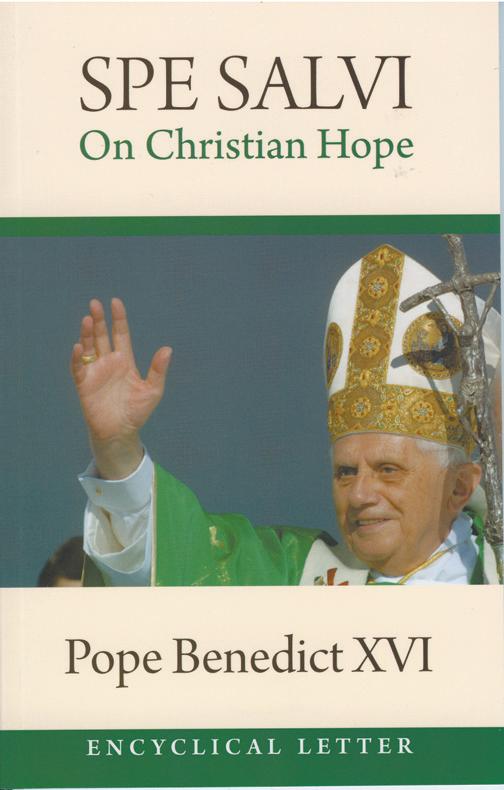



Saints: A Closer Look
By Fr Thomas Dubay
Who are the Saints? What do they mean for us living today? What sets them apart? How do we achieve this sanctity? How do sinners become saints? Fr Thomas Dubay not only reveals what makes saints tick, but also inspires readers to do the same and equip them with the tools to do so. It is a challenge, but sainthood is still possible for us.
$19.95+postage


2008 My School Diary
My School Diary is a unique and innovative diary designed for Catholic Primary school students, parents and teachers. Containing fun and informative pages on many aspects of the faith, it also helps parents and teachers advance the faith life of students.
$8.95+postage


Life Issues, Medical Choices: Questions and Answers for Catholics
By Janet E Smith & Christopher Kaczor
Cloning, IVF, Stem Cell Research, Euthanasia, Sterilisation, Family Planning. Smith and Kaczor give a clear discussion of the Catholic position on these issues. Beginning with an introduction to the fundamentals which underlie this position, such as the value of human life, the meaning of suffering, conscience, sin, intrinsic evil, prudent judgement, and the principle of double effect, Smith and Kaczor then apply these fundamentals to the bioethical life issues we face today.
$24.95+postage
Quiet Moments With Padre
Pio: 120 Daily Readings
Spend time with Padre Pio, reflecting on the important things in life, and find consolation in his words during your struggles. $16.95+postage


January 16 2008, The Record Page 16
Contact Natalie at the Bookshop on Mondays, Tuesdays and Thursdays 10am - 5pm on (08) 9227 7080 or via bookshop@therecord.com.au

 ■
Sylvia Defendi and Anthony Barich
■
Sylvia Defendi and Anthony Barich
















































 Perth’s WYD coordinator Anita Parker giving a lecture series.
Perth’s WYD coordinator Anita Parker giving a lecture series.







 with Debbie Warrier
with Debbie Warrier






 By Joanna Lawson
By Joanna Lawson


































